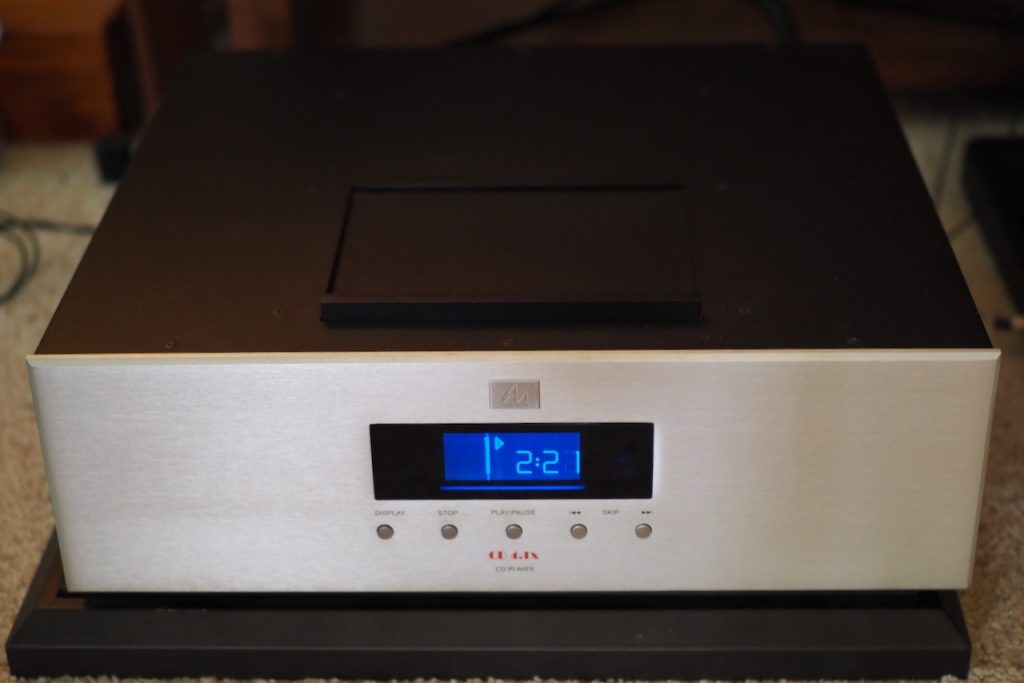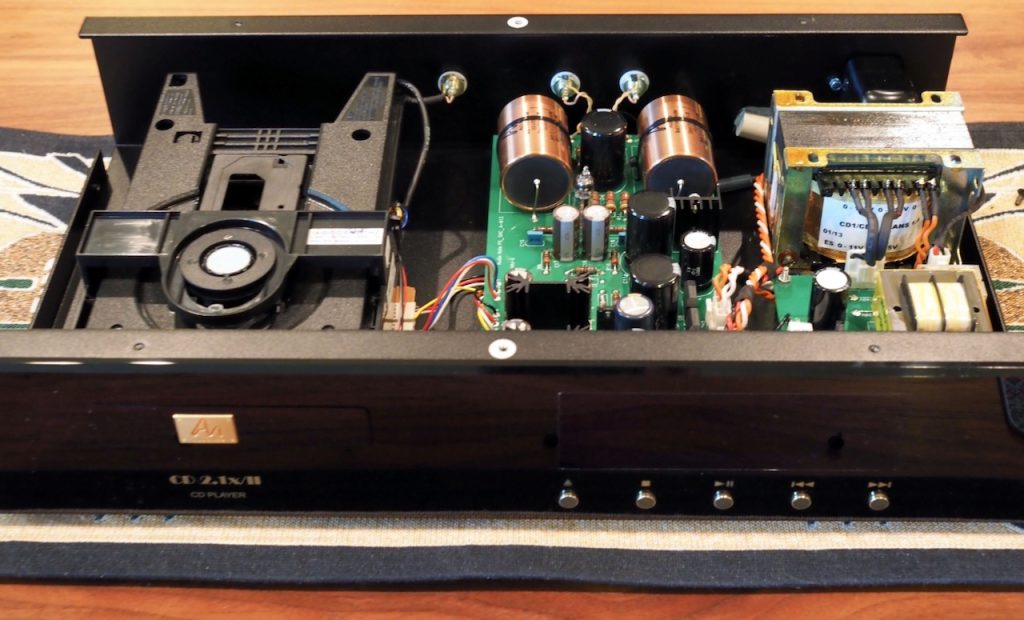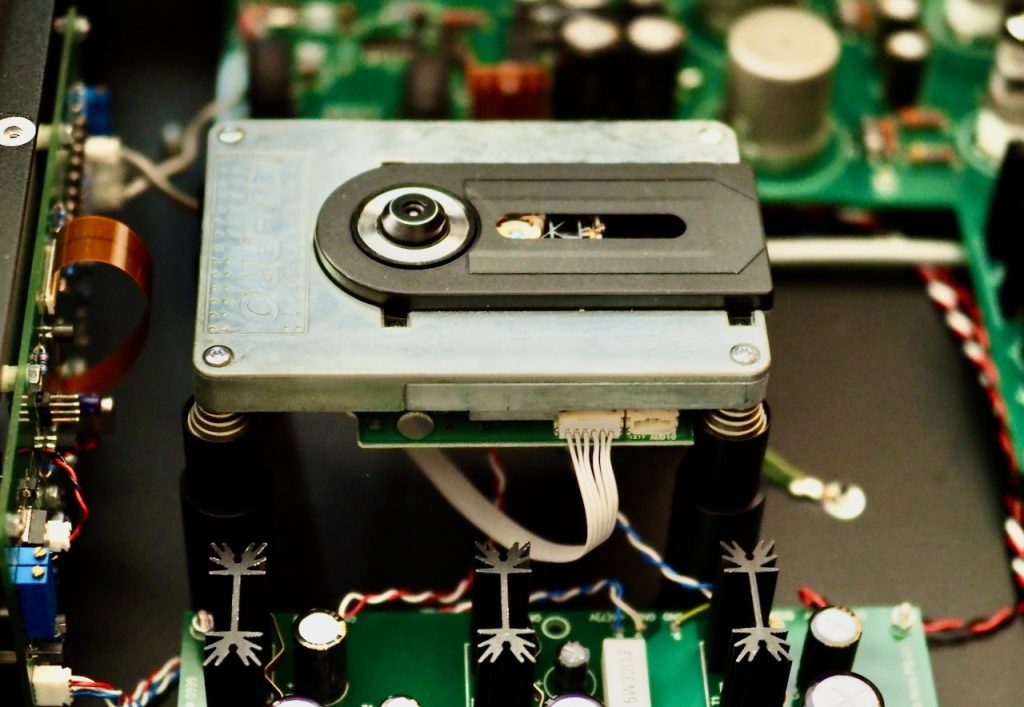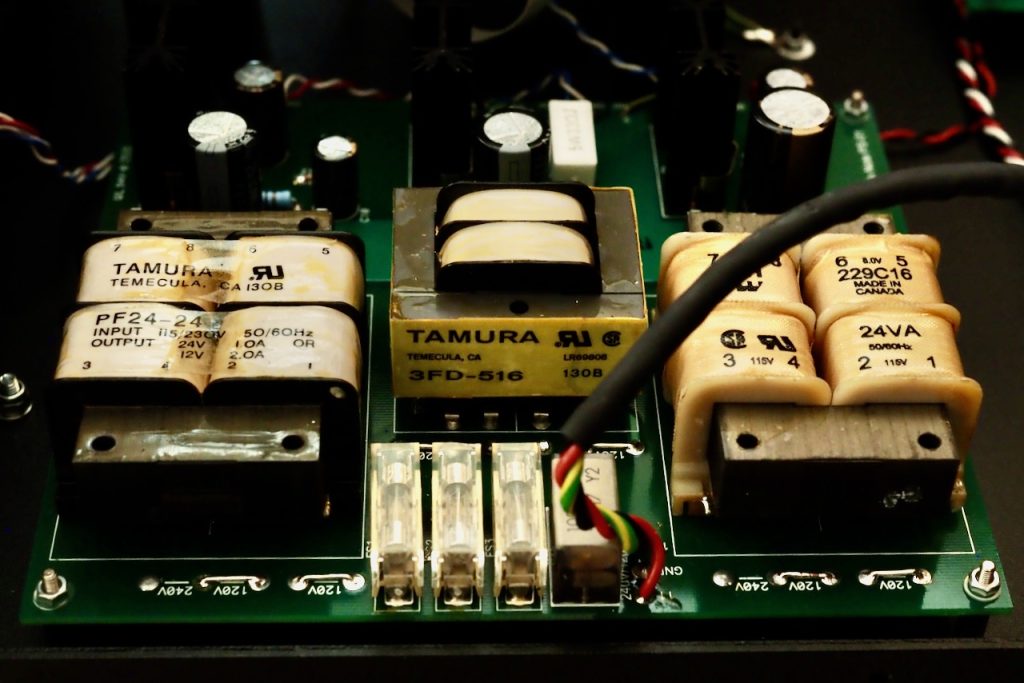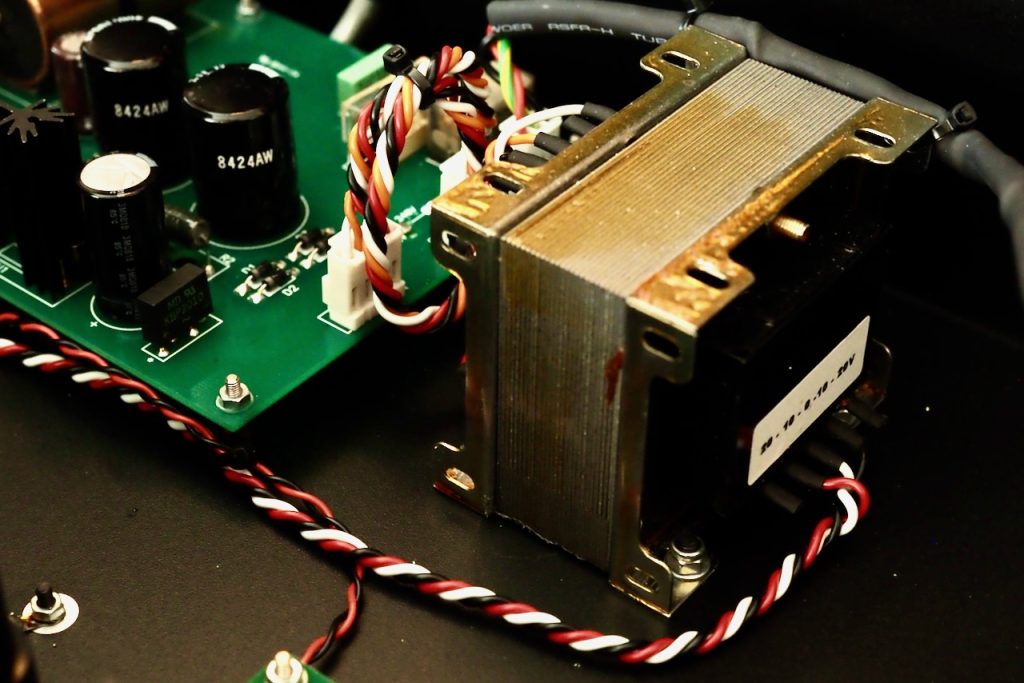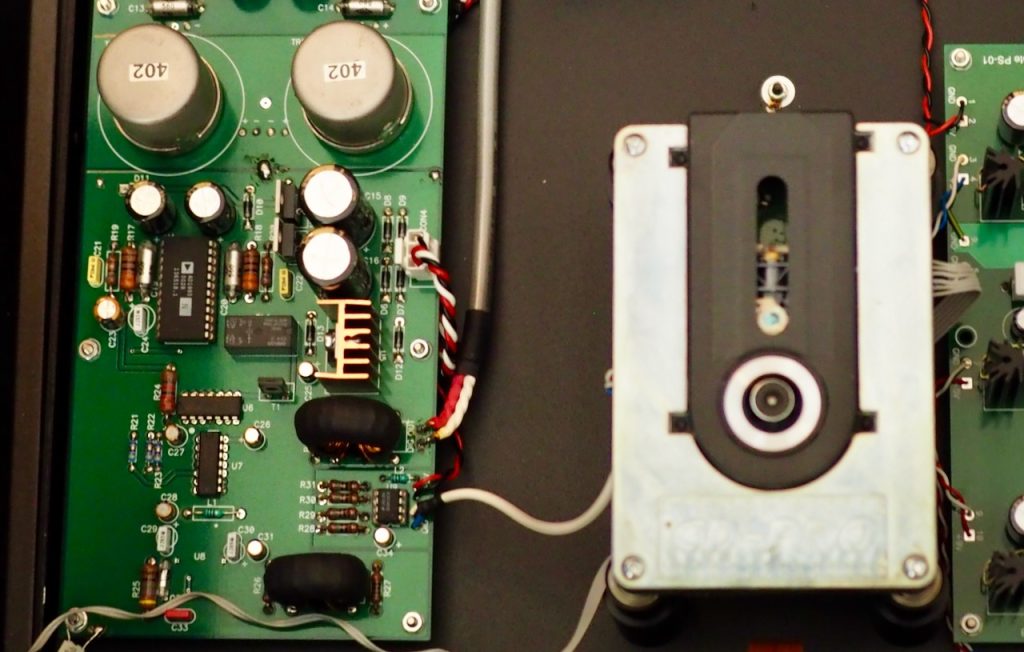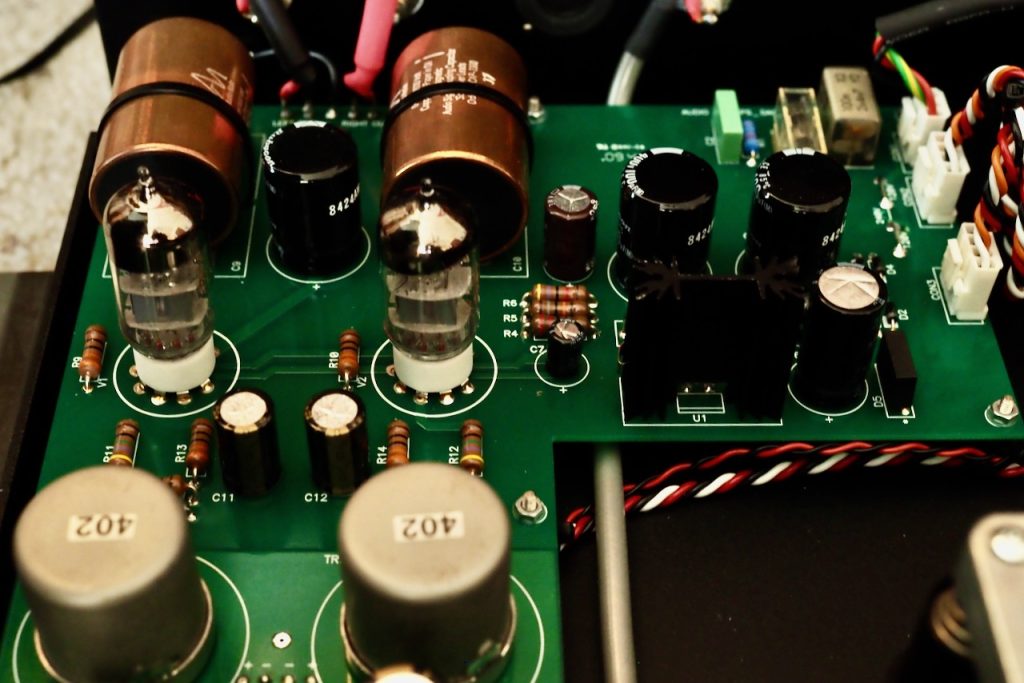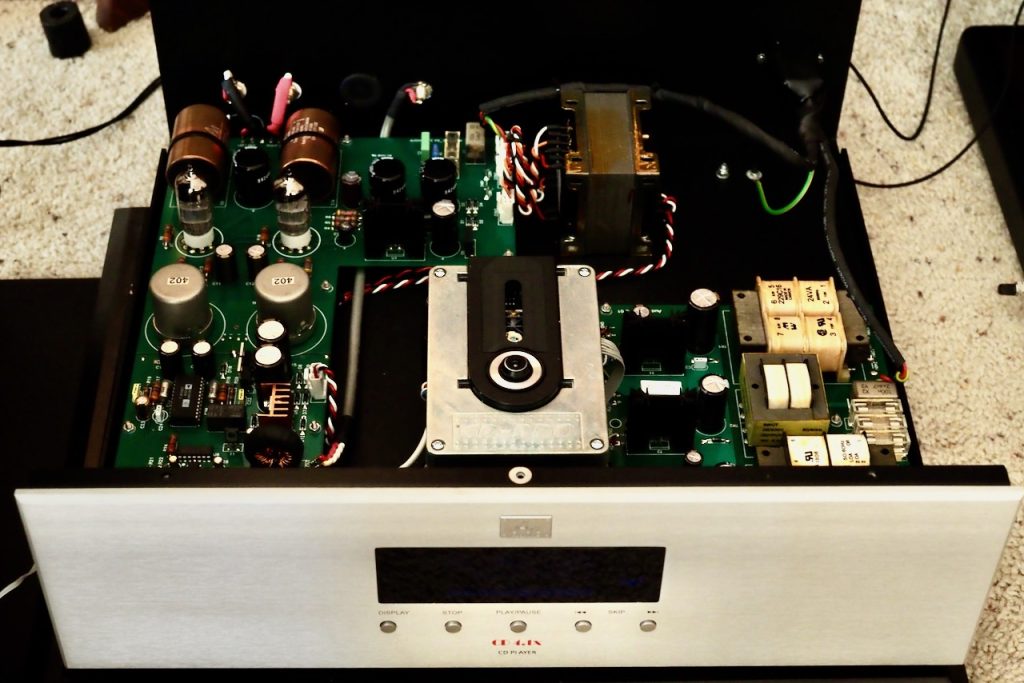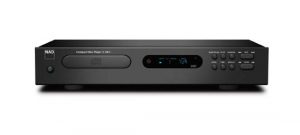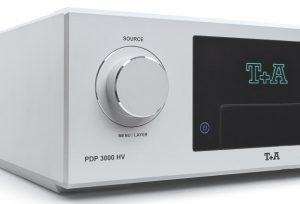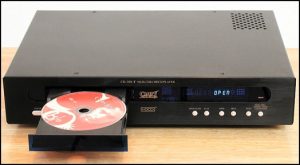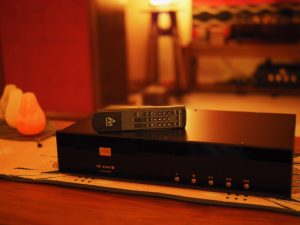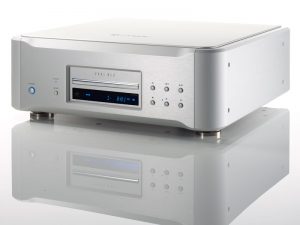Greetings friends, I hope life is treating you well in 2022.
Today I have an impressive Red Book CD player to tell you about, the Audio Note (UK) CD 4.1x Red Book CD player (MSRP $14,331 USD).
The Audio Note (UK) CD 4.1x CD player is an expensive high-fidelity Red Book CD player with a pro-level build quality that sits towards the top of Audio Note (UK)'s Red Book CD player product line.
Audio Note (UK) 'Level Three' CD 4.1x Red Book CD player. Photo courtesy of Audio Note (UK).
You might be wondering why I'm writing about an expensive Red Book CD player for you in 2022.
After all, my preference for many years has been good analogue sources for playing my vinyl record collection.
With vinyl records currently enjoying a well-deserved renaissance in popularity, why would I—or you—even consider Red Book CDs as a viable music software choice? I mean aren't Red Book CDs and CD players passé in 2022?
Those are both fair questions, and to be perfectly candid, I had long considered Red Book CDs and CD players to be second tier choices for serious listeners.
Red Book CD players had a disappointing debut way back in 1982 when the first consumer CD players were released, and those early CD players sounded sterile, harsh, and just generally amusical to me. Ick.
Until recently, every CD player I have listened to after their ignominious debut in 1982, fell far short of the listening pleasure I experienced from my turntables and vinyl records.
However, something important happened to change my mind about the relevance of Red Book CDs and CD players for contemporary listeners.
I have even come to the conclusion that for some listeners a high-fidelity CD player may actually be the most important source component of all.
My sea change in opinion came about from listening to music.
In particular, in addition to the usual recordings from the magnetic era's stereo period (1958 to 1975), I have found that I truly enjoy listening to monaural recordings from the acoustic (1877 to 1925), electric (1925 to 1945), and early magnetic (1945 to 1957) eras of the recording arts, as some of the greatest and most important musical performances in our historic recorded music canon reside there.
It used to be that if one wanted to listen to the great musical performances found on monaural records from across the acoustic, electric, and early magnetic eras of the recording arts at their best, it meant having multiple dedicated analogue sources that were optimizable for the many equalization curves found on those early record albums before 1954.
While we mostly take it for granted, the standard RIAA equalization curve we know today didn't come into existence until 1954. Prior to 1954 there were reportedly more than 100 equalization curves in use for adjusting the volume of the different frequency bands of recordings to get the smooth response needed to play back a record album.
These days, only a very few fortunate listeners have access to the hugely important canon of albums that were released during the acoustic, electric, and early monaural magnetic eras of the recording arts, and fewer yet have access to those records in pristine condition.
Our worldwide music culture, our entire historic recorded music canon, and the recording arts that created it, are of immense significance to music lovers and audiophiles worldwide.
Fortunately for us, it turns out that now there are actually a fair number of music labels specializing in early recordings from the acoustic, electric, and early magnetic eras of recording. They have done all the hard work of restoring, equalizing, and transferring the most pristine examples of those recordings to digital, so you and I can listen to those important musical performances on Red Book CDs.
I have found having such ready access to those historic recordings on Red Book CDs to be a really big deal for me in learning about and enjoying the entirety of what our historic recorded music canon has to offer.
Not only that, it turns out that by documenting those important early recorded music performances with digital transfers from 78 records, those record labels have created a substantial 'Library of Alexandria' type of musical resource for future generations of listeners, so that they too will be able to easily access and enjoy the remarkable accomplishments documented in our early recorded music canon.
Personally, I believe every music lover and audiophile would benefit significantly from learning more about the early eras of recording, the musicians that were recorded, and listening to the great performances of music documented in our historic recorded music canon. I know I certainly have.
It also turns out that there is a lot more musical potential in those Red Book CDs than I had ever imagined possible.
It wasn't until my review of the Audio Note (UK) CD 2.1x/II Red Book CD player in Positive Feedback Issue 112 (photo below), that I realized how indispensable a high-fidelity CD player was for my listening enjoyment, and for the expansion of my listening horizons.
It turned out that the Audio Note (UK) CD 2.1x/II CD player delivered musical performances from Red Book CDs that were so satisfying that they were comparable to the sort of musical enjoyment I experienced while listening to LPs on my turntable.
The Audio Note (UK) CD 2.1x/II Red Book CD player provided a natural sounding, eminently musical, and high-fidelity presentation of recorded music from CDs that I immensely enjoyed. I was smitten with its musical charms.
The convergence of the availability of those important acoustic, electric, and early magnetic monaural recordings on Red Book CDs, and the appearance of high-fidelity CD players to listen to them on, is a tremendous resource for present day listeners.
For listeners passionate about the great performances of music that reside in all the eras of our historic recording arts, the importance of having access to so much of our historic music canon on Red Book CDs, and being able to play them back over high-fidelity Red Book CD players like the Audio Note (UK) CD 2.1x/II and CD 4.1x Red Book CD players, cannot be overstated.
A high-fidelity Red Book CD player turns out to be both a practical and important source component for those of us who enjoy exploring the great musical performances in our recorded music canon from all of the eras of our recording arts.
In fact, for those listeners with wide-ranging interests in the great musical performances of our recorded music canon that span the acoustic, electric, magnetic, and digital eras of recording, a high-fidelity CD player may now be the single most important source component of all.
I hope in this article I can share with you some of the tremendous joy I have experienced from listening to and learning about the great musical performances recorded during the acoustic, electric, and magnetic eras of the recording arts that are now available as Red Book CDs.
Being able to learn about and listen to those early performances on high-fidelity CD players has been an extremely positive life-changing listening experience for me, one that has made me more aware of the broad span of musical treasures contained within our vast recorded music canon.
If you haven't already, I hope one of these days you will be able to join me in this grand adventure of exploring all the great recordings of music that are present in our historic recorded music canon.
From the earliest acoustic era recordings to the most revered magnetic era stereo recordings, I have experienced the tremendous listening satisfaction and musical illumination that comes with experiencing the full breadth of the recordings we have available to us in 2022, and I think you would too.
The Audio Note (UK) CD 4.1x 'Level Three' Red Book CD Player, MSRP $14,331 USD.
You've no doubt noticed the 'Level Three' and 'Level One' designations for the Audio Note (UK) CD 4.1x Red Book CD player, and the Audio Note (UK) CD 2.1x/II Red Book CD player, respectively.
What's that level system all about?
The Audio Note (UK) 'performance level system' (HERE) describes "a series of ideological and technological performance platforms" that components in the Audio Note (UK) product lines are organized into.
The Audio Note (UK) components are graded into a system of seven performance levels, with Level Zero being the entry level for high-fidelity components, and Level Six being the most lofty level of performance.
For example, the Level Three Audio Note (UK) CD 4.1x Red Book CD player (photo above) is two levels of performance above the Level One Audio Note (UK) CD 2.1x/II Red Book CD player (photo below) in the Audio Note (UK) CD player product line.
The price structure of Audio Note (UK) product lines also ascends with each ascending performance level. The price increase at ascending levels is due to the higher performance—and more expensive—internal circuit components, chassis, etc., used in building the components.
For example, the Level One Audio Note (UK) CD 2.1x/II Red Book CD player's MSRP price is $5657 USD, and the Level Three Audio Note (UK) CD 4.1x Red Book CD player's MSRP price is $14,331 USD, a 2.5 times increase in price going from Level One to Level Three, due to the more ambitious component builds that yields the higher levels of performance.
To get a better idea of what the Audio Note (UK) 'levels' mean in terms of design, I asked Audio Note (UK)'s digital design guru, Darko Greguras (photo above), if he could tell us a little more about the design differences between the Level One Audio Note (UK) CD 2.1x/II and the Level Three Audio Note (UK) CD 4.1x CD players.
"The CD 4.1x was engineered to be a well balanced and musical sounding platform, and it shares the same design and voicing decisions we made for the CDT Two/II CD transport and the DAC 2.1x digital to analogue converter. The CDT Two/II and DAC 2.1x are tuned slightly differently to optimize them for a single chassis, and these two platforms combine for a stunningly musical result." (photo above)
"Starting with the reading side, the CD 2.1x/II is closer to the CDT One/II CD transport and its Philips L1210 mechanism (photo above), whereas the CD4.1x uses our in-house modified Philips CD Pro 2 mechanism." (photo below)
"The CD Pro 2 simply extracts harmony, musical flow, and tonal density far better, and it also benefits from a specially tuned power supply for optimal dynamic response."
"The power supply sections are separated from the processor, logic circuits, motors and actuators and controller / display for the best sonic result." (photos above)
"The DAC section of the CD 4.1x (above) is based on the AD1865 digital to analogue converter and a pair of I/V transformers between the DAC section and an analogue output section based on a pair of ECC88 valves (photo below)."
"All of our DACs and CD players are without oversampling and digital filtering, indicated by the ".1x" in their name, which means direct from disc."
"The benefits of the CD 4.1x's DAC and analogue output sections over the CD 2.1x's Philips 1543 16-bit converter chip and 6111WA miniature triode analogue output stage are significant, with the reading side, DAC side and the output stage all being more sophisticated and refined, with a much better dynamic transfer."
"The latest specification CD 4.1x uses the Tonmeister voicing strategy, consisting of our Audio Note (UK) standard electrolytic capacitors, Audio Note (UK) tantalum resistors, Audio Note (UK) copper foil coupling capacitors, and copper wiring throughout. This combination of parts superbly preserves the traditional Audio Note (UK) sonic sophistication, tonal balance, and dynamic transfer.
To summarize:
The Level One Audio Note (UK) CD 2.1x/II CD player (above) utilizes a modified Philips L1210 front-loading Red Book CD mechanism, and a digital to analogue converter based on the Philips 1543 16-bit converter chip. No oversampling and no digital filtering is utilized.
The analogue output stage incorporates a 6111WA miniature triode, and Audio Note (UK) copper foil output capacitors. The output voltage is approximately 3V RMS.
The Audio Note (UK) CD 2.1x/II CD player weighs 5 kg (11 pounds), and measures 96 mm (3.8 inches) high, 445 mm (17.5 inches) wide, and 270 mm (10.6 inches) deep.
The website link is HERE, and the owner's manual link is HERE. MSRP is $5657 USD.
The Level Three Audio Note (UK) CD 4.1x CD player utilizes a modified Philips CD Pro 2 top-loading Red Book CD mechanism, and a digital to analogue converter based on the Analogue Devices AD1865 18 bit converter chip. No oversampling and no digital filtering is utilized.
The analogue output stage incorporates two ECC88 dual triodes, and Audio Note (UK) copper foil output capacitors. The output voltage is approximately 3V RMS.
The CD 4.1x CD player uses the Tonmeister voicing strategy, with Audio Note (UK) standard electrolytic capacitors, Audio Note (UK) tantalum resistors, Audio Note (UK) copper foil coupling capacitors, and copper wiring throughout. The display has its own dedicated power supply to reduce internal noise, and the chassis design of the CD 4.1X is much more robust.
The Audio Note (UK) CD 4.1x CD player weighs 11 kg (24.3 pounds), and measures 142 mm (5.6 inches) high, 445 mm (17.5 inches) wide, and 428 mm (16.9 inches) deep.
The website link is HERE, and the owner's manual link is HERE. MSRP is $14,331 USD.
Let's do a 'walk-around' of the Audio Note (UK) CD 4.1x CD player.
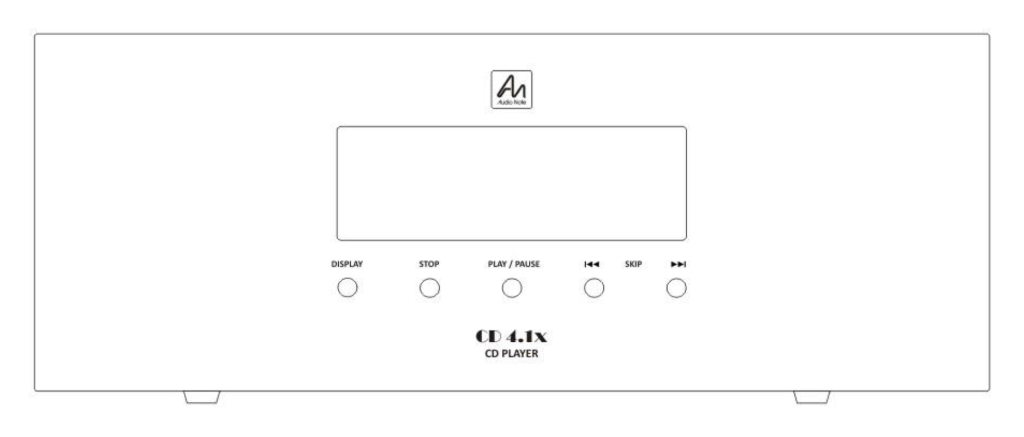
Diagram courtesy of Audio Note (UK).
From left to right on the front panel, are the buttons for "display" (change intensity or turn the display on/off), "stop" (to stop disc playback), "play/pause" (to pause play of a disc), "reverse skip" (to go to the previous track on a disc), and the "forward skip" (to go to the next track on a disc).
The display shows all the usual information about playing a CD; the total playing time of the disc, the playing time of each track, etc.
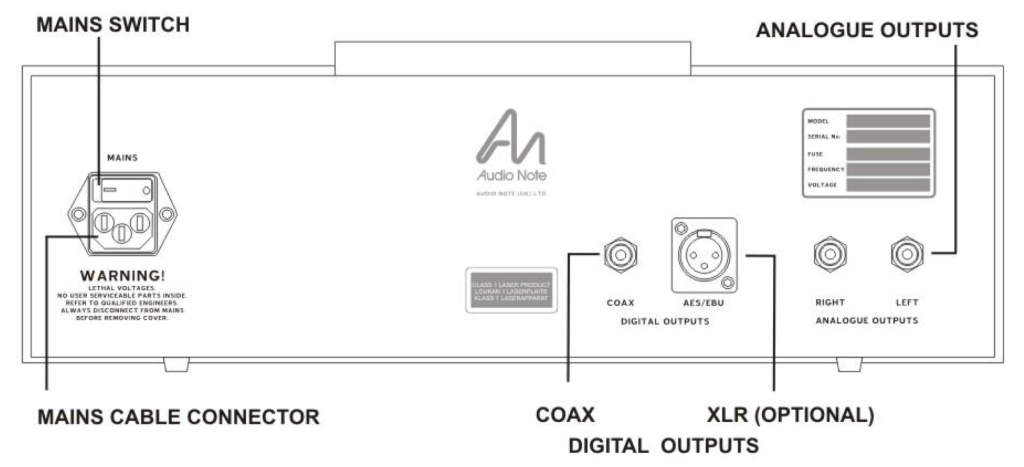
Diagram courtesy of Audio Note (UK).
From left to right of the rear panel you see the mains power switch and mains cable connection, an RCA coax digital output, an optional AES/EBU XLR output, and the RCA analogue left and right outputs.
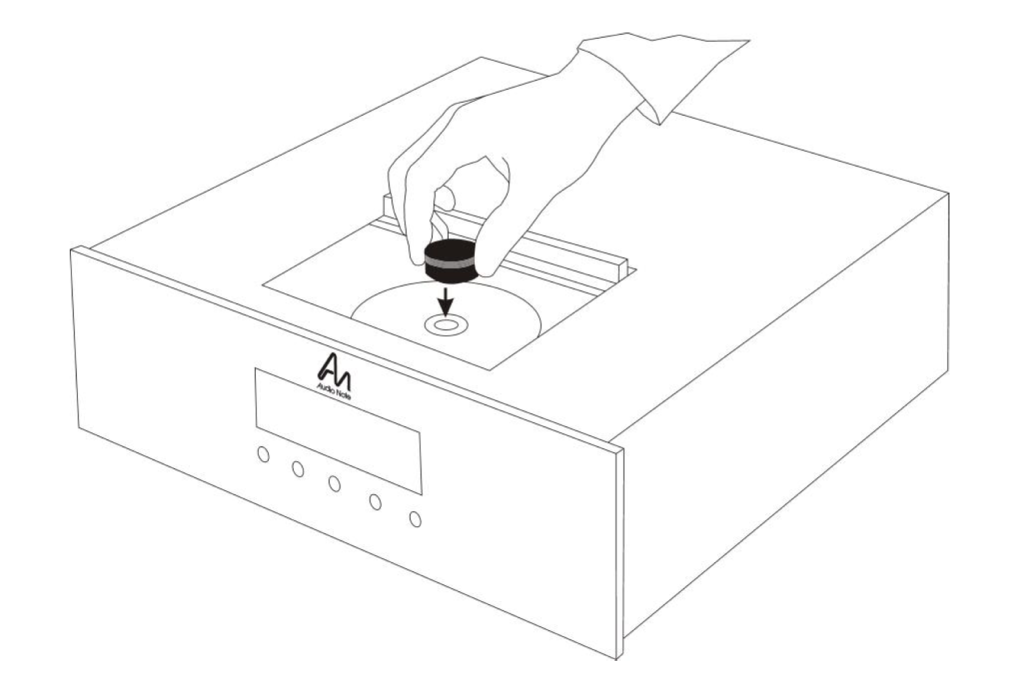
Diagram courtesy of Audio Note (UK).
On the top of the CD 4.1x is a sliding door that covers the disc. To load and play a disc, the sliding door is opened, the disc clamp is removed, the disc is placed on the spindle, the disc clamp is placed over the spindle and disc, and the door is closed. Then you're ready to play.
As a result, the user experience with the CD 4.1x is very analogue-like, and comparable to the listener placing a record on the turntable spindle, adding a record weight, and then playing music.
Those who have a turntable as part of their hifi system will feel right at home with the Audio Note (UK) CD 4.1x CD player.
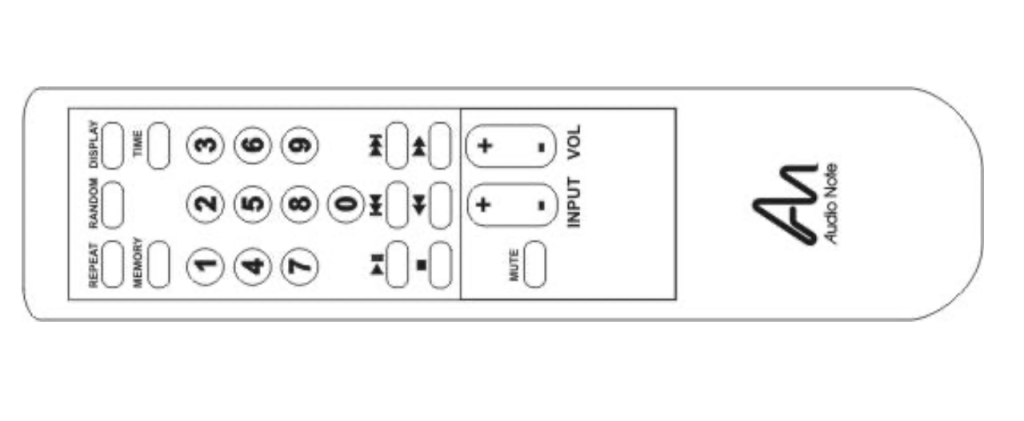
Diagram courtesy of Audio Note (UK).
A programable remote control comes with the CD 4.1x that gives you all the usual remote features. For a full description of the remote control features see the owner's manual HERE.
Just by visual inspection, inside and out, its easy to tell that the Audio Note (UK) CD 4.1x Red Book CD player is a serious pro-level product.
The hand-built Audio Note (UK) CD 4.1x CD player oozes quality inside and out, from its robust chassis, to its customized top-loading Philips CD Pro 2 transport, and the über quality of components in its power supplies, its non-oversampling and non digital-filtering DAC, and the analogue vacuum tube output section, its easy to tell the Audio Note (UK) CD 4.1x Red Book CD player means business.
Review System
The review system used for this article was my Tannoy Westminster Royal SE loudspeakers with custom external Duelund CAST crossovers, and the custom Triode Lab 45 EVO SET integrated amplifier.
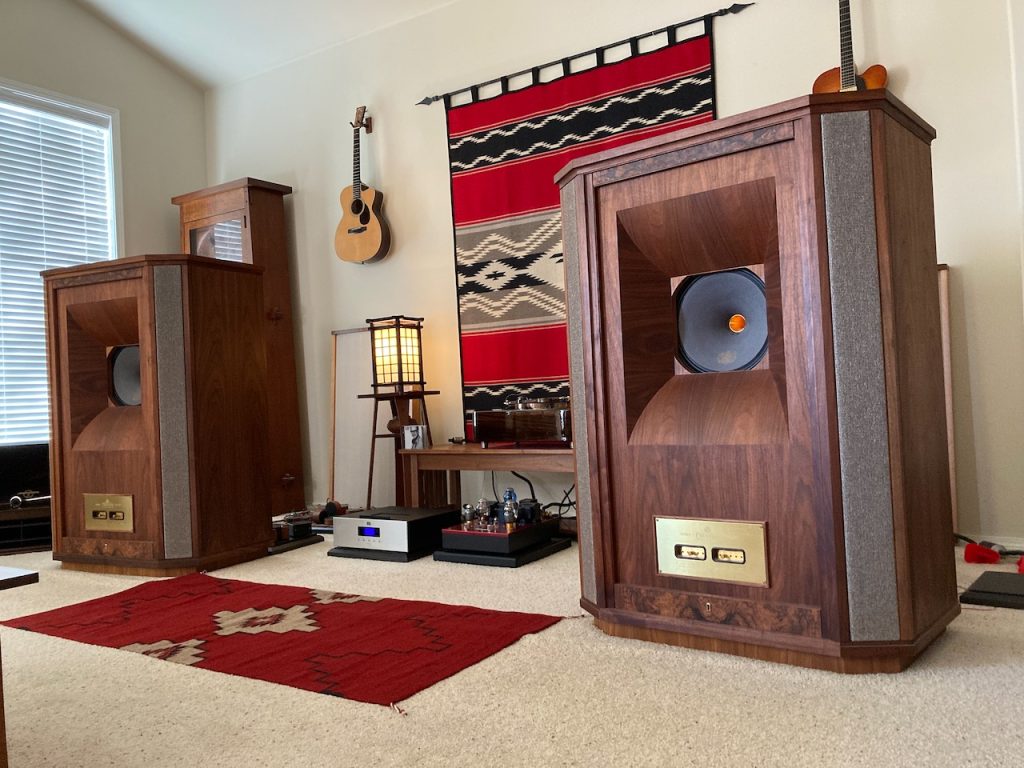
The cables used for this article were the vintage inspired Duelund DCA16GA tinned-copper speaker cables, with vintage Western Electric WE16GA tinned-copper cabling being used for all driver connections inside my Westminsters, and to connect to the external Duelund crossovers.
Duelund 'Dual' DCA16GA tinned-copper interconnects terminated with plastic-free Duelund RCAs connected the Audio Note (UK) CD 4.1x CD player to the Triode Lab 45 EVO SET integrated amplifier.
Belden 8402 tinned-copper microphone cable interconnects connected the Leben RS-30EQ phono equalizer to the Triode Lab 45 EVO integrated amplifier.
Audio Note (UK) AN-V silver interconnects connected the Audio Note (UK) AN-S4 step-up transformer to the Leben RS-30EQ phono equalizer.
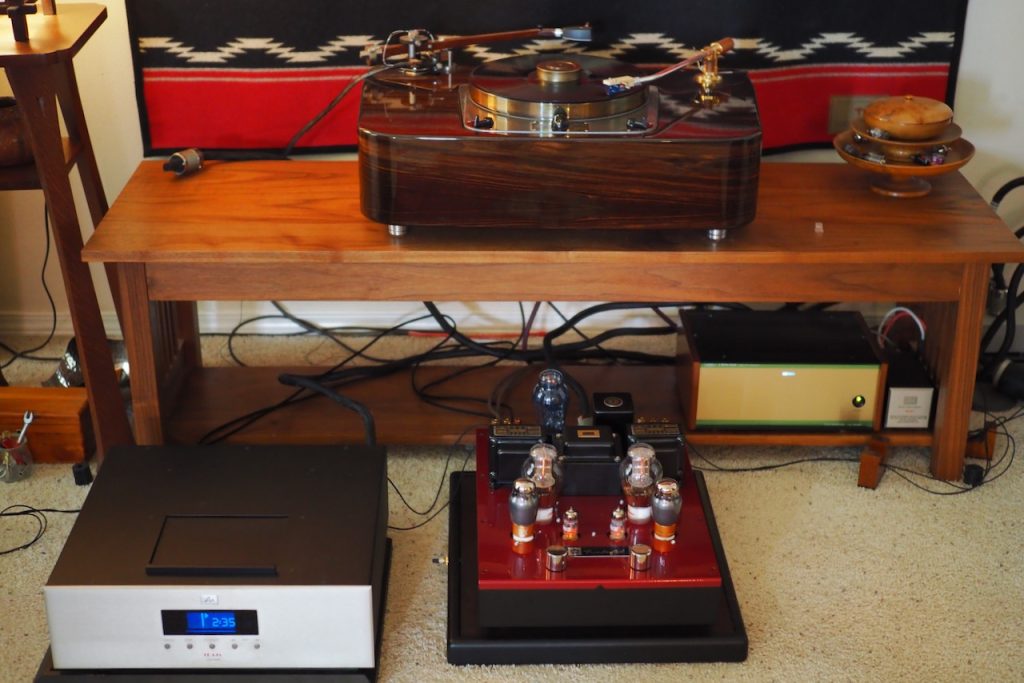
The Audio Note (UK) CD 4.1x CD player and Triode Lab 45 EVO SET integrated amplifier were placed upon Acoustic Revive isolation platforms.
Power cables for all the components were Acoustic Revive Absolute, which were all plugged into an Acoustic Revive RPT-6 Absolute NCF Power Distributor unit, which itself was connected to wall AC with an Acoustic Revive Absolute power cable.
My AC wall outlets consisted of the Acoustic Revive CB-1DB receptacle base plate, CFRP-1F carbon fiber outlet plate, and an Acoustic Revive modified Oyaide R-1 receptacle.
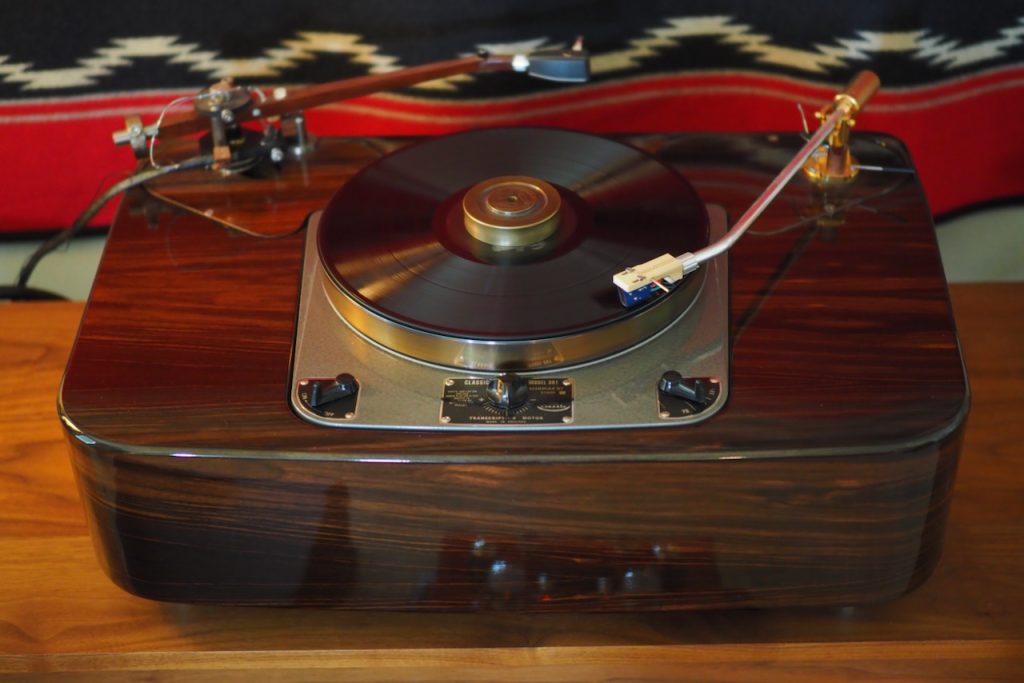
The Audio Note (UK) Io I MC phono cartridge, AN-S4 step-up transformer, and AN-V silver interconnects (review HERE), served as the analog comparator in combination with my custom CTC Garrard 301 turntable.
The Audio Note (UK) CD 2.1x/II CD player (review HERE) was used as a digital comparator.
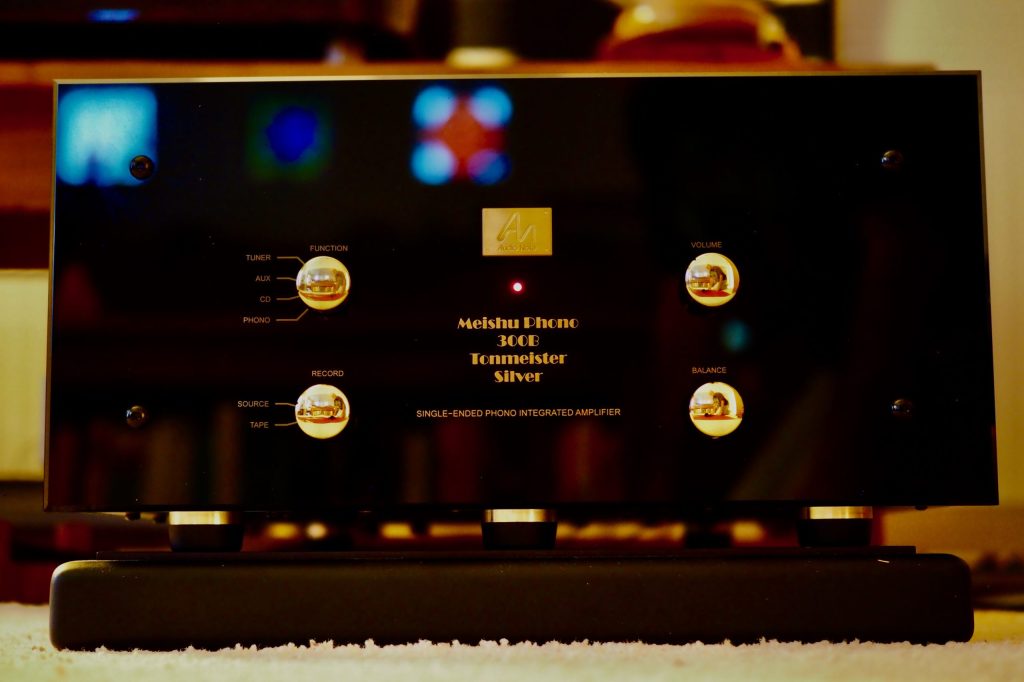
I had planned on introducing the Audio Note (UK) Meishu Phono Silver Tonmeister 300B SET integrated amplifier to the readers of Positive Feedback as part of this article (above), however, the Meishu hasn't reached its 200 hours of recommended run-in time yet, so the Meishu is still building up its run-in hours in my vintage Altec A5 Voice of the Theatre audio-visual system.
As soon as the Meishu's run-in hours are topped off, I'll transfer it over to my Tannoy Westminster Royal SE loudspeakers based music system for its upcoming Positive Feedback feature review, which is coming up next in my review queue.
In that article I'll also provide listening impressions about the full Audio Note (UK) Level Three components suite—sources to amplification—that I have here.
Now let's do some listening with the Audio Note (UK) CD 4.1x CD player.
I'll provide my impressions of the Audio Note (UK) CD 4.1x CD player's performance on a variety of music from the acoustic, electric, and magnetic eras of the recording arts.
I'll also offer my impressions of the Level Three Audio Note (UK) CD 4.1x CD player's performance in comparison to that of the Level One Audio Note (UK) CD 2.1x/II CD player (the Issue 112 feature review is HERE).
Additionally, for all you vinyl aficionados out there, I'll offer my impressions of the Level Three Audio Note (UK) CD 4.1x CD player's performance for playing back some exceptionally well-recorded albums of music from the stereo period of the magnetic recording era, and compare its performance to the analogue source combination of the Level Three Audio Note (UK) Io I moving-coil cartridge, Level Four Audio Note (UK) AN-S4/L step-up transformer, and Level Three Audio Note (UK) AN-V silver interconnects (review HERE) for playing back those same albums on vinyl.
Listening
As a preamble to my listening impressions, in addition to the usual magnetic era stereo recordings I enjoy listening to, I would like to emphasize what a revelation and pleasure it has been listening to Red Book CDs of monaural albums from our acoustic, electric, and early magnetic eras of recording (1877 to 1957).
While those early monaural recordings may not match the level of fidelity I hear from the best recordings of the magnetic era stereo period, the recordings are still very impressive from a musical standpoint, and the sound quality is much better than I anticipated when played back through high-fidelity CD players like those from Audio Note (UK).
Those early monaural recordings feature some of the greatest artists and musical performances ever recorded in the history of the recording arts, and the musicality and sound quality of those recordings as heard through the Audio Note (UK) CD 4.1x CD player were magnitudes greater than I would have ever imagined possible.
I was surprised to find out during my musical explorations that digital transfers from 78 records can be more emotionally engaging to listen to than recordings from the magnetic era of recording's stereo period, which are known for for their impressive sound quality.
It's a classic conundrum. While I found that the overall recorded sound quality of those early monaural recordings tends to be lower in fidelity than the best of magnetic era stereo recordings, the emotional intensity of the musical performances I experienced while listening to them was often much greater.
With many of the 78 transfers I've listened to, there's a sense of vividness, macro-dynamics, and emotional intensity to the presentation that few magnetic era stereo recordings can match.
I listen to monaural albums with a little bit different 'ear' than I do with stereo albums, as monaural albums don't have the usual stereo visuospatial cues encoded into them that creates the aural illusion of a wide and deep soundstage, with aural images of instruments and vocalists arranged upon it.
When the usual audiophile visuospatial listening paradigm disappears, I have found that what appears in its place is the musical performance itself, which shifts my listening focus as an audio reviewer to evaluating more completely the level of a component's prowess in playing the musical performances and engaging me emotionally as a listener.
That listening paradigm shift is basically that of going from an audiophile perspective that puts emphasis on listening for visuospatial cues in recordings, to more of a musician's style of listening that is similar to ear training, where the focus is more on hearing what is going on in the music itself, than focusing on the visuospatial elements of the stereo recording style.
For those not familiar with listening to the fine 78 transfers we have available today, it may take a brief orientation period while listening to fully appreciate the musical treasures that these 78 transfers represent, but it is well worth making the mental adjustment necessary to enrich your listening time.
So in the end, my listening to early monaural recordings has become more about hearing—about experiencing—the nature and 'feeling' of the music itself, the degree of emotional engagement, and the overall listening satisfaction delivered.
Let me say a quick word about the fidelity of the recordings I've listened to that span the acoustic, electric, and magnetic eras of the recording arts.
In terms of bandwidth, resolution, and record surface (or tape) noise, even though I'll refer those monaural eras of the recoding arts as being lower-fidelity in nature compared to the best of the magnetic era stereo period of recordings, that doesn't mean they are unpleasant to listen to or that they 'sound bad.' They don't sound bad, in fact they sound remarkably good and are extremely enjoyable to listen to. So much for my preconceived ideas about early recordings.
How do I tactfully say this? If you listen to these early monaural recordings and you think they sound bad, its more likely related to issues with your audio system's voicing that need to be addressed, rather than issues with the recordings themselves.
Now let me tell you about some of the listening adventures I've been enjoying with the Audio Note (UK) CD 4.1x CD player, starting with some early monaural recordings, and ending with some fine magnetic era stereo recordings.
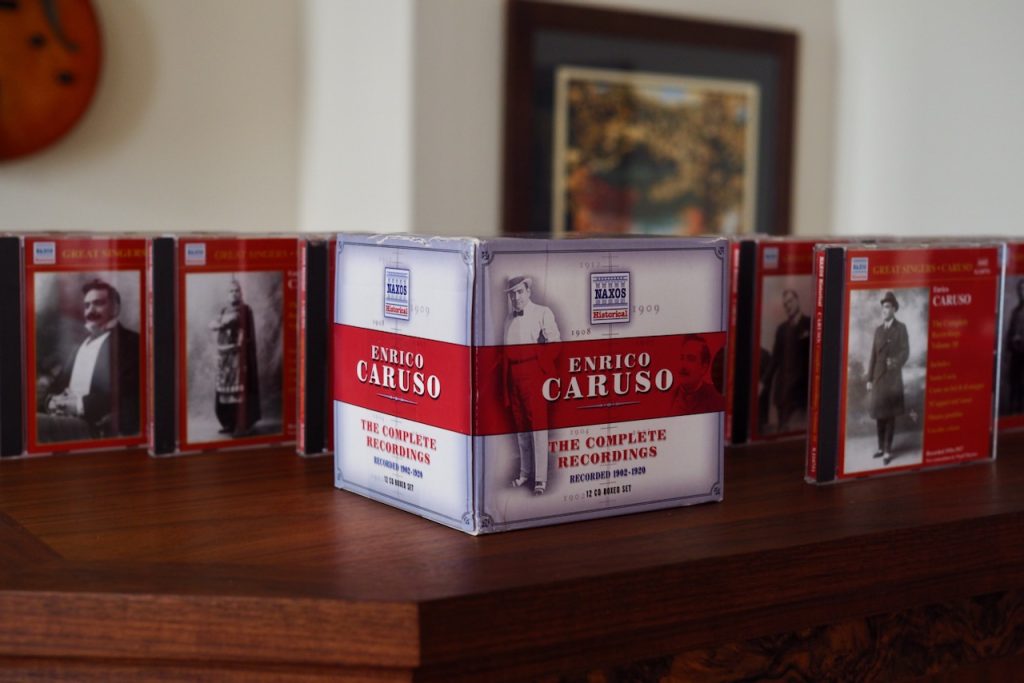
When I think about the acoustic era of the recording arts (1877 to 1925), some of the first recorded performances that come to mind are those by the great Italian operatic tenor, Enrico Caruso.
Enrico Caruso made his first gramophone recordings with Fred Gaisberg in 1902 at the Grand Hotel in Milan, Italy. Over the course of his career, Enrico Caruso recorded 266 albums, and sold sixty million copies. Caruso was so popular during his career that he needed twenty-one full-time employees to support him.
During the acoustic era the recorded volume was lower, as was the bandwidth, at about 250Hz to 2500Hz. That bandwidth covers the low midrange (250Hz to 500Hz), the midrange (500Hz to 2000Hz), and part of the upper midrange (2000Hz to 4000Hz).
Given that the midrange is where much of the 'action' in music is located, I found the musical results from those acoustic era gramophone recordings to still be extremely satisfying to listen to through the Audio Note (UK) CD 4.1x CD player.
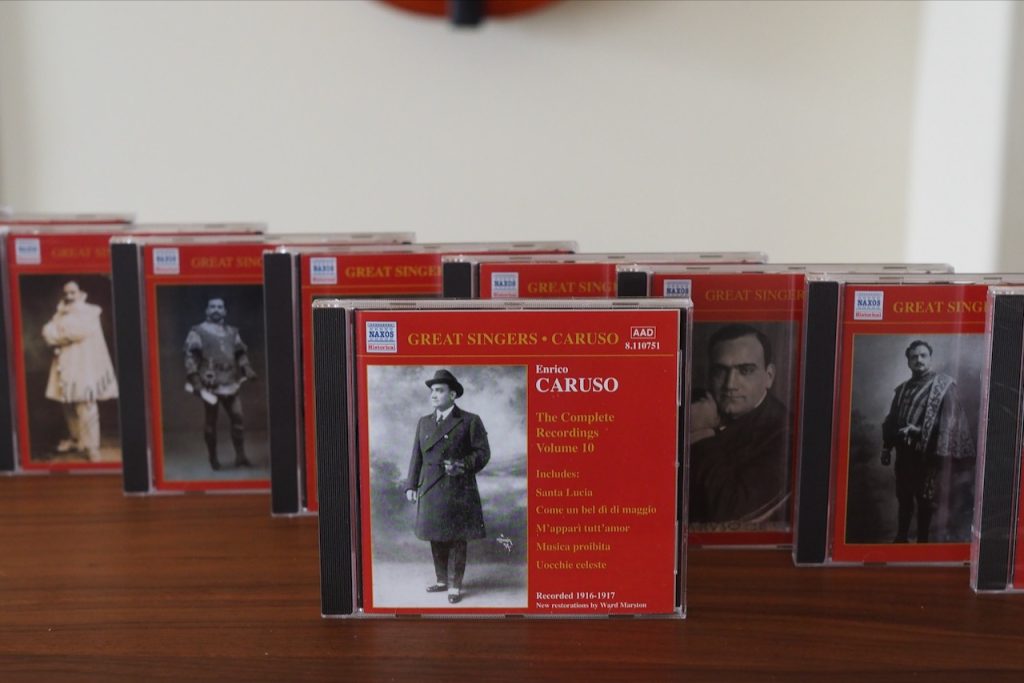
For example, with the 12 CD Naxos Historical box set that was restored and transferred to digital by Ward Marston, Enrico Caruso, The Complete Recordings, I could hear in the Volume 10 CD (recorded 1916 - 1917) that the Audio Note (UK) CD 4.1x CD player preserved the sense of 'authenticity' of the acoustic era recordings lower volume and bandwidth, along with a little bit of 78 record surface noise.
However, I found the Audio Note (UK) CD 4.1x CD player made the 78 record surface noise a non-issue during my listening, by rendering it as gently natural instead of sharply intrusive, and by putting the noise in a different 'acoustic space' from that of the music, which allowed my attention to stay focused on the music itself, instead of being distracted by 78 record surface noise.
However, it wasn't the sound of the recordings that first got my attention with the Audio Note (UK) CD 4.1x CD player, it was the sound of Caruso's remarkable voice and his amazing performances.
The Audio Note (UK) CD 4.1x CD player fully resolved Caruso's superb enunciation, with the natural warmth, richness, and beauty of his voice intact, and presented the tremendous emotional impact Caruso's voice was capable of delivering in rather remarkable fashion.
Also, the Audio Note (UK) CD 4.1x CD player ensured that trinity of audio traits that makes music come alive for me as a listener—natural tonality, a vivid aural presence of the music in my listening room, and the realistic dynamics of the recording era—were present in abundance, and really impressed me while listening to Caruso.
The Audio Note (UK) CD 4.1x CD player made Caruso's performances incredibly satisfying to listen to, and the level of musical engagement captured my attention and emotions so completely that I found it nearly impossible to focus on documenting my listening impressions while listening to Caruso's captivating performances.
The way the Audio Note (UK) CD 4.1x CD player presented those ancient direct-to-disc 78 recordings was so musical, so transcendent of sound quality, so completely immersive emotionally, and by allowing the full greatness of the performances to come through, I found it very challenging to convey the listening experience with words.
Rather, the music became a pure emotional experience that thrilled, surprised, and amazed me with its intensity.
I felt like I had experienced a remarkable time-travel event. I was transported back in time, listening to the 78 records that were the 'high-fidelity' recordings listened to by music lovers over 100 years ago.
Was it the Audio Note (UK) CD 4.1x CD player, or was it Caruso, that delivered such an intense listening experience?
Yes, to both. The Audio Note (UK) CD 4.1x CD player allowed me to experience the full magnitude of Caruso's incredible talents with a remarkable degree of musicality from those ancient recordings of over 100 years ago.
I'm not quite sure how to articulate this, but even though the monaural window of these 78 transfers was only about the width between my loudspeakers, there was a sense of projection of the music and the recorded acoustic into my living room that filled and energized it in a way that transcended any of the usual soundstage considerations. I really enjoyed the 'acoustic era' style of musicality.
I was truly impressed with the Audio Note (UK) CD 4.1x CD player's performance on those early acoustic era recordings of Enrico Caruso.
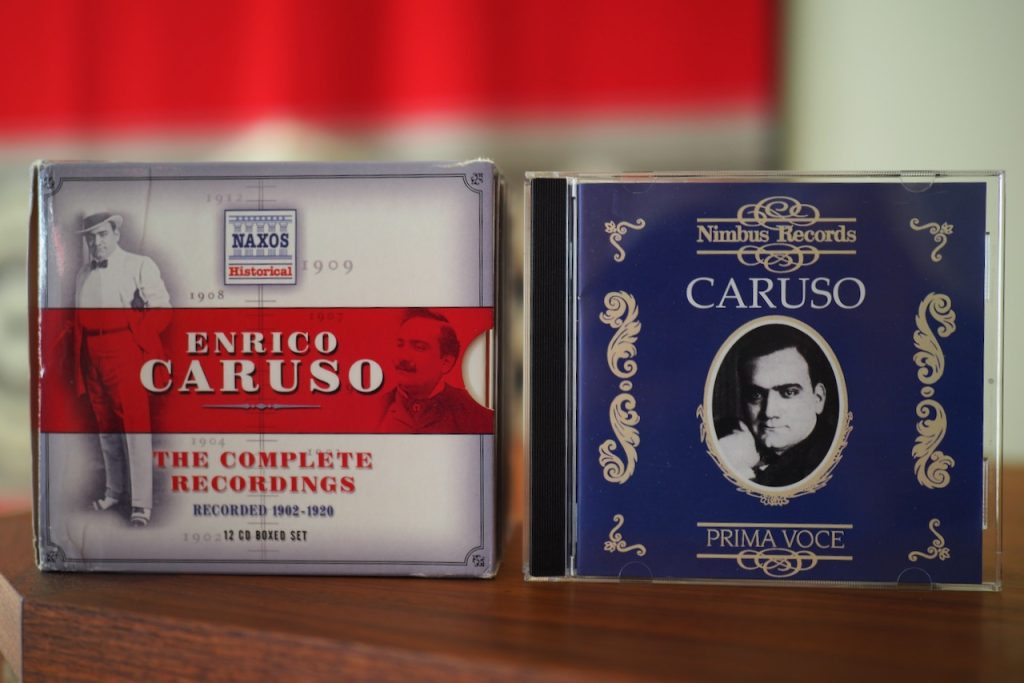
The Audio Note (UK) CD 4.1x CD player not only clearly articulated all of the variations in fidelity of each of the recorded Caruso performances included in the Naxos Historical box set, but it also clearly presented the audible differences between the 78 transfer methods used by Ward Marston, and those used by Nimbus Records for the Prima Voce Caruso album (more about their transfer method HERE), for example.
More importantly, while the Audio Note (UK) CD 4.1x CD player was very transparent and resolving in its ability to portray the nature of these various acoustic era recordings, it also made them all extremely accessible as music during listening, delivering intensely pleasurable listening experiences, which I thought was a most remarkable achievement.
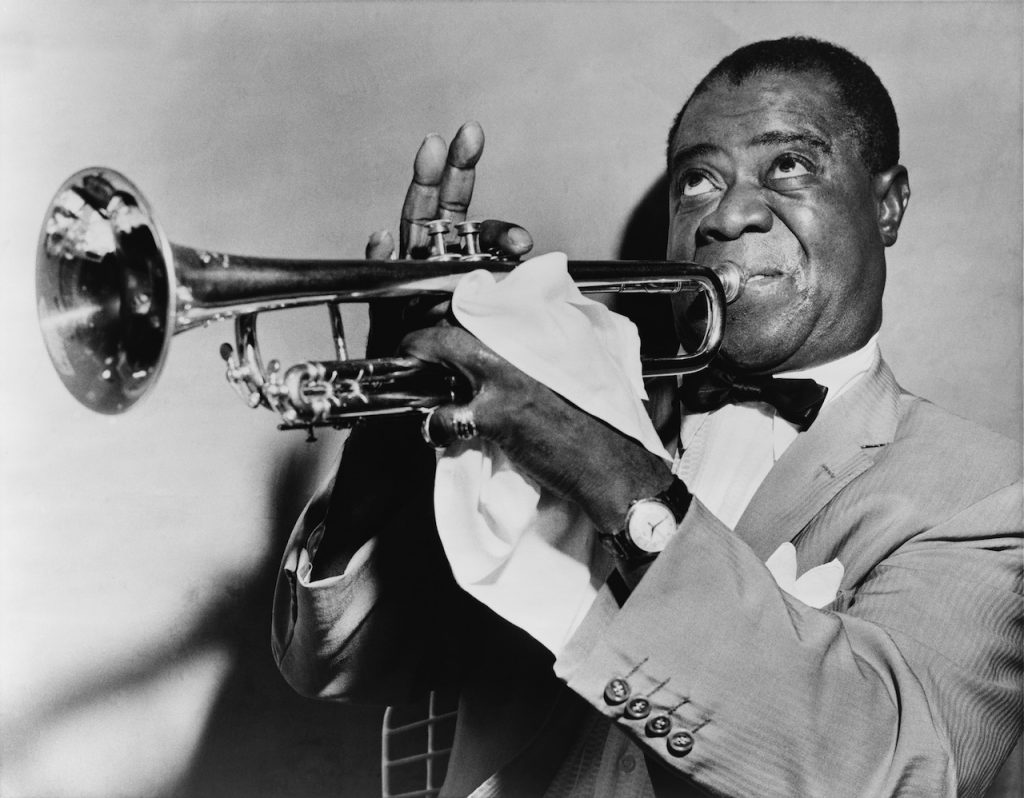
Public domain photo of Louis Armstrong, courtesy of the Library of Congress.
With the advent of microphones, vacuum tube amplification, and voltage driven cutting heads, the direct-to-disc electric era monaural recordings improved considerably upon the overall fidelity of acoustic era recordings, featuring a bandwidth of approximately 50Hz to 6000Hz, greater recorded volume levels, and lower distortion (more HERE).
The electric era bandwidth encompassed part of the sub bass region (20Hz to 60Hz), the bass region (60Hz to 250Hz), the low midrange (250Hz to 500Hz), the midrange (500Hz to 2000Hz), the upper midrange (2000Hz to 4000Hz), and the presence region (4000Hz to 6000Hz), making for nearly full range recordings.
Some of the most famous electric era recordings are those of Louis Armstrong and his Hot Five and Hot Seven groups (more HERE), which were recorded between 1925 and 1928. The Hot Five and Hot Seven electric era recordings are considered the most influential recordings in jazz history, and are an essential part of any jazz collection.
It's hard to overstate the influence those electric era Hot Five and Hot Seven recordings had on jazz music, as it was in the Hot Five and Hot Seven recording sessions that Louis Armstrong demonstrated his method of improvising over the chord changes of songs to the jazz world, which would firmly establish his musical genius, as well as his massive influence on the direction that jazz would evolve in to this very day.
The Hot Five and Hot Seven recording sessions were originally issued as 78 records on the Okeh Records label.
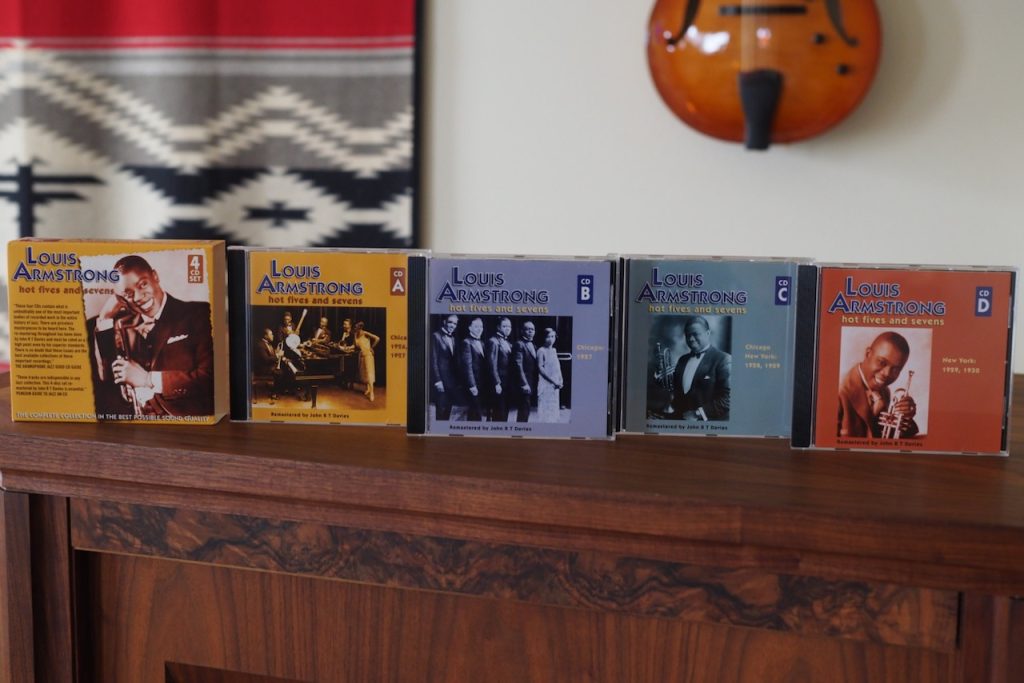
I have two collections of digital transfers of Louis Armstrong from 78 records, the first being a 4 CD set remastered by John Davies for JSP Records, Louis Armstrong Hot Fives and Sevens (above).
Through the Audio Note (UK) CD 4.1x CD player the Louis Armstrong Hot Fives and Sevens CDs were a superb listening experience that delivered those incredible performances just the way I like to hear them, with a natural sounding warmth, superb dynamics, a vivid aural presence, and remarkably, almost no 78 record surface noise from the shellac 78s they were transferred from.
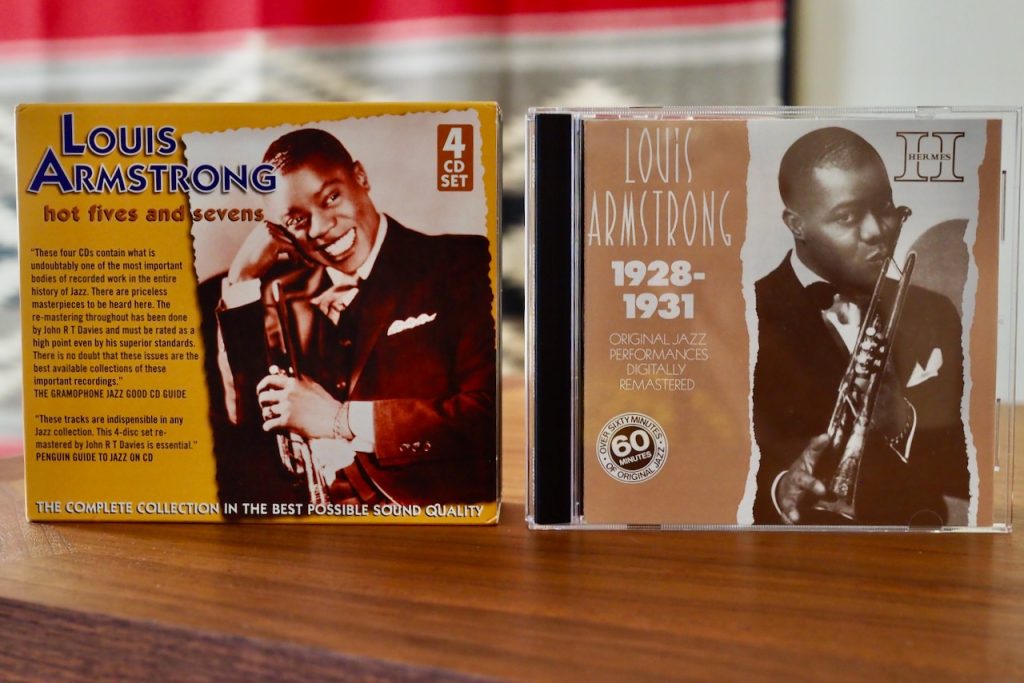
My second compilation CD is Louis Armstrong 1928-1931 (above right), which was issued by Nimbus Records as part of their 'Hermes' vintage jazz series.
Some of the selections for Louis Armstrong 1928-1931 were from the 1928 Hot Five recording sessions, while the rest were from recording sessions shortly after the Hot Five and Hot Seven sessions, and were every bit as impressive.
The transfers for Louis Armstrong 1928-1931 were made from Okeh Records vinylite test pressings, and the fidelity of those digital transfers are a remarkable achievement.
The liner notes state that the "Original archive recordings (were) made available and transferred by Morris Hunting," and that, "These transfers have been made from vinylite test pressings as opposed to commercial shellac pressings, thereby giving true fidelity with minimal surface noise, without the use of artificial filtering or enhancement."
The Audio Note (UK) CD 4.1x CD player played all of the various Louis Armstrong 78 transfers back with such musical excellence and sound quality that it's hard to believe these are nearly 100 year old recordings from the electric era of recording.
The Audio Note (UK) CD 4.1x CD player also easily revealed the differences in the sound quality of the different 78 recordings in the compilations, and provided insights into the overall performance of the digital transfer methods utilized.
I heard more information coming through, and better overall sound quality, in the unfiltered vinylite transfers of Louis Armstrong 1928-1931, than I did with the shellac transfers of Louis Armstrong Hot Fives and Sevens, which sounded slightly muffled in the presence region in comparison to the vinylite test pressing transfers (which may be due to the use of noise reduction techniques that are often used for shellac records).
Regardless of which Louis Armstrong 78 transfers I was listening to, the Audio Note (UK) CD 4.1x CD player presented them as superbly engaging musical performances, and in the remarkable monaural 'high-fidelity' style of electric era recordings.
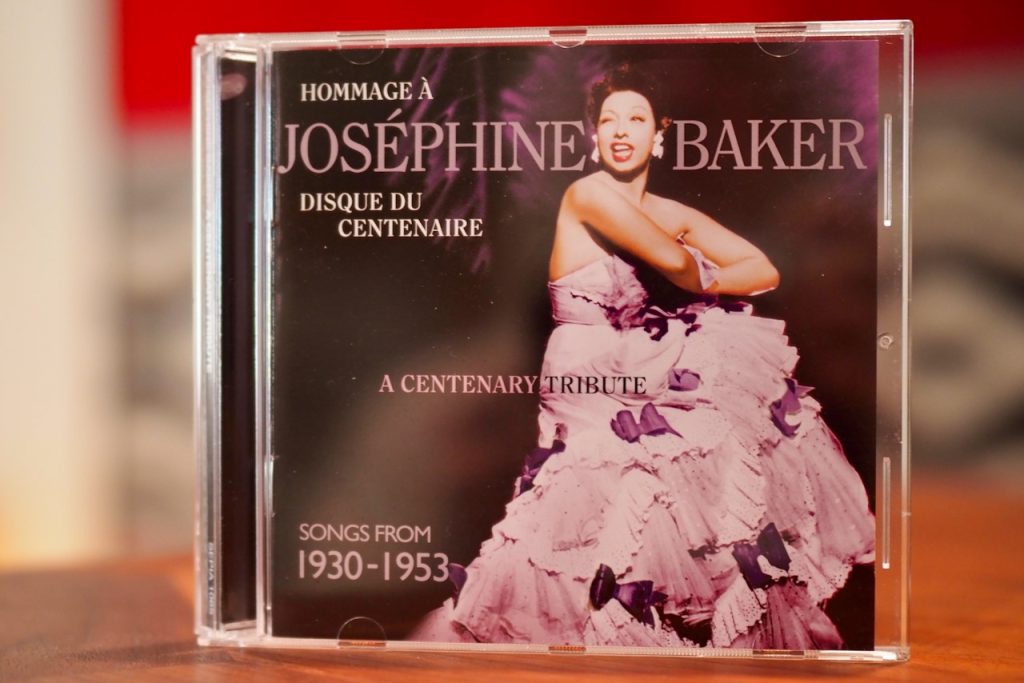
One set of electric era 78 recordings that I just haven't been able to get enough of lately are those of Joséphine Baker (June 3, 1906 to April 12, 1975) on the A Centenary Tribute CD (Sepia Records 1065).
If you haven't yet had an opportunity to listen to the stunning performances of Joséphine Baker, I recommend that as something you should do at your first opportunity.
Joséphine's is a rather amazing story. Born in the USA, Joséphine became a naturalized French citizen, a renowned French entertainer of incredible talents, an agent of the French resistance, and an advocate of the civil rights movement in the USA. What an incredible lady!
The liner notes state that the songs for A Centenary Tribute were sourced from 78 records, and were remastered by L. K. Lee at Ancient Sound Restore. On the back of the CD it says, "While every effort has been made to eliminate the surface noise from the original 78 rpm recordings used for this issue, including use of the CEDAR audio noise reduction system, some slight surface noise may remain."
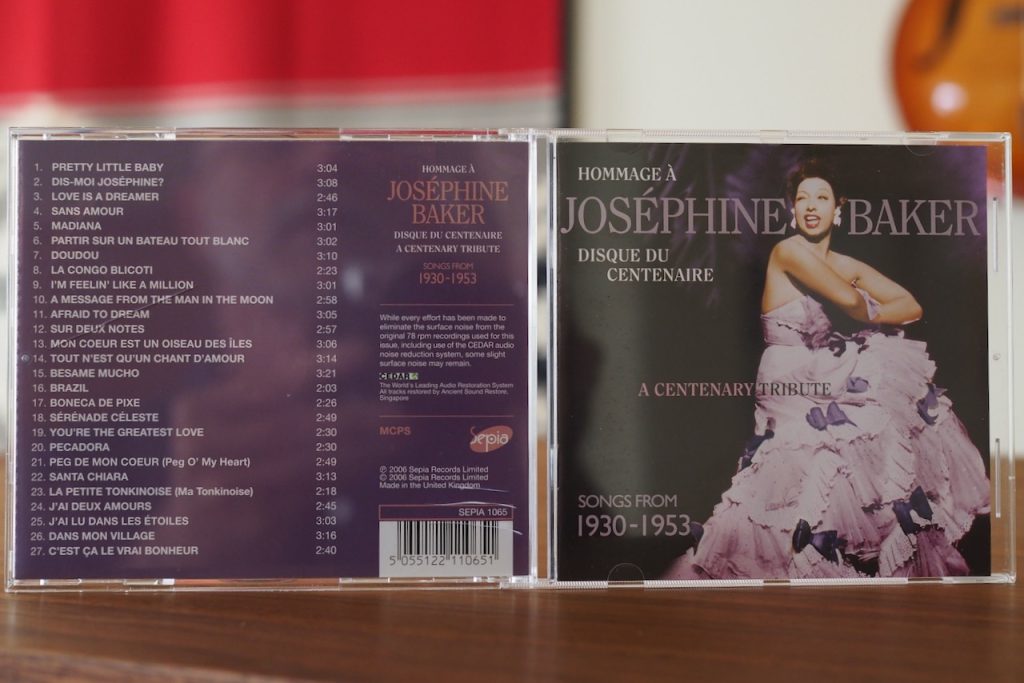
Tracks 1 -16 on the A Centenary Tribute CD were recorded from 1930 to 1944 during the electric era of recording. Tracks 17 - 27 were recorded 1949 to 1953, which was during the early magnetic era of recording, but according to the liner notes the recordings were all transfers sourced from 78 records. Unfortunately, the specific 78 records that these recordings were sourced from were not provided in the liner notes.
The Audio Note (UK) CD 4.1x Red Book CD player really allowed the superb performances of Joséphine Baker to come through as full of life and in all their considerable musical glory. The intensity of the listening experience the CD 4.1x delivered from those recordings was of such beauty, grandeur, and excellence, that the CD 4.1x earned my sincerest admiration for the ability of its musicality performance to transcend that of the fidelity of electrical era of recording, and that of the digital medium of their transfers.
What I heard coming from the Audio Note (UK) CD 4.1x Red Book CD player wasn't as narrowly defined as being simply analog or digital, it was music I was hearing, music that transcended any sense of the recording era or media, which provided incredibly satisfying listening sessions.
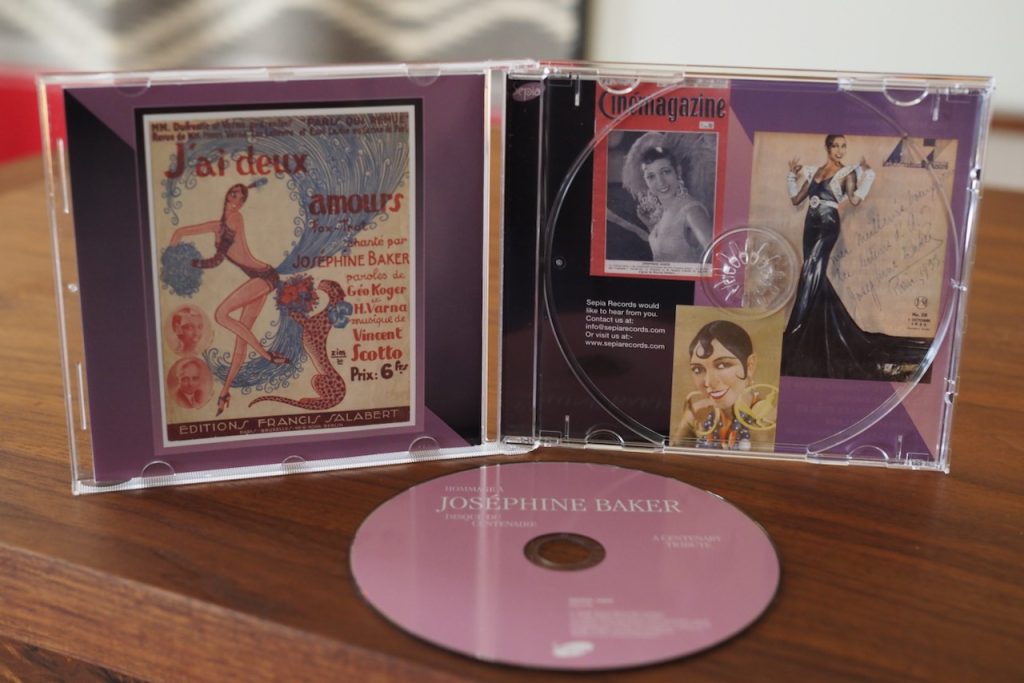
Through the Audio Note (UK) CD 4.1x Red Book CD player, Joséphine's vocal talents were stunning, her voice remarkably beautiful, and these 78 recordings were vibrant and dynamic in a way that few magnetic era recordings can match.
The Audio Note (UK) CD 4.1x Red Book CD player revealed that the Joséphine Baker 78 recordings made from 1930 to 1944 had higher fidelity than those 78 recordings made by Okeh Records of Louis Armstrong from 1925 to 1931, with more information resolved in the sub bass region, the bass region, the midrange, the upper midrange, and the presence region of the recordings, which gave the music a much more detailed, nuanced, and articulate presentation.
While listening to A Centenary Tribute with the Audio Note (UK) CD 4.1x Red Book CD player, I found the sound quality was at least comparable to, and oftentimes better, than digital transfers of monaural recordings from the magnetic era of the recording arts. That impressed me.
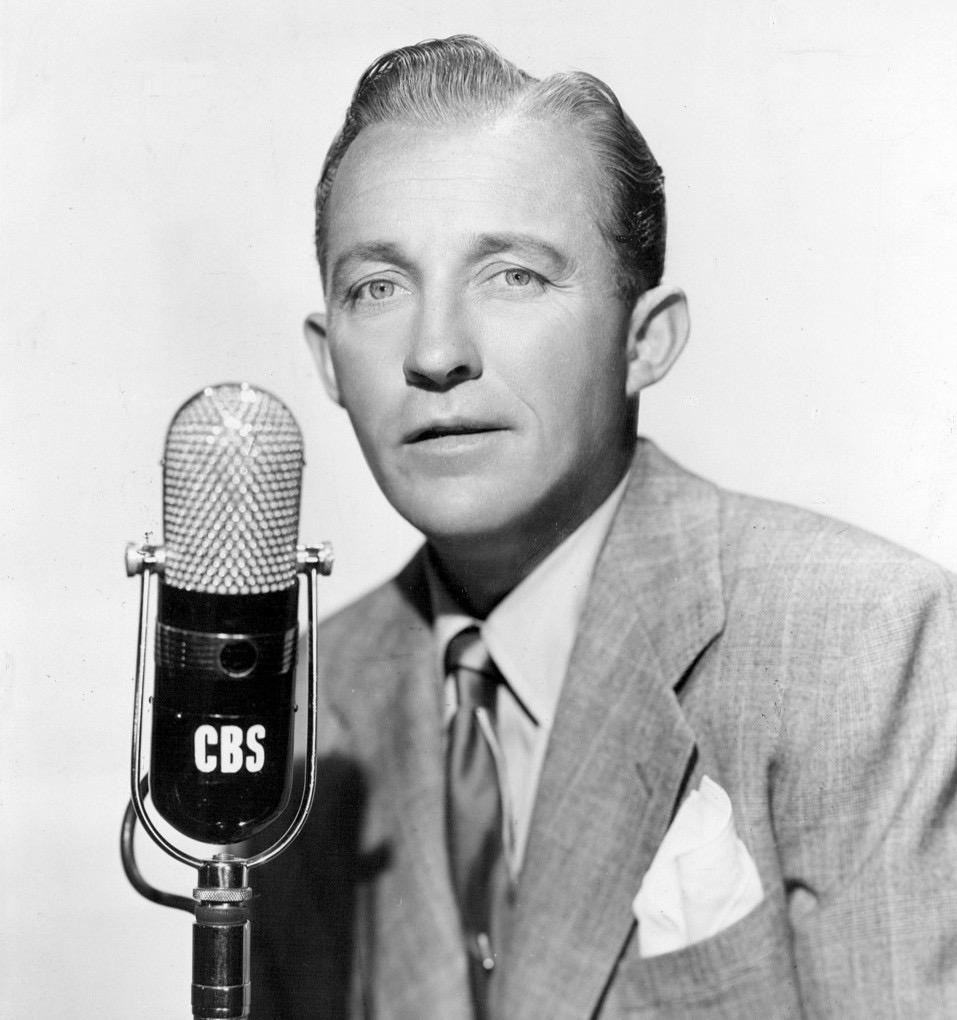
Public domain photo of Bing Crosby, courtesy of Wikipedia.
The magnetic era of recording (1945 to 1975) got started in the USA in 1945 when John T. (Jack) Mullin, an electrical engineer in the U.S. Army Signal Corps during WWII, brought back the advanced technology of the German developed Magnetophon magnetic tape recorders to the USA after the end of WWII.
Mullin modified and further improved the performance of Magnetophon tape recorders, and by 1947 musician and entertainer Bing Crosby was recording his live radio shows with the modified Magnetophon recorders.
By 1948 Bing Crosby had invested $50,000 in the Ampex Electric and Manufacturing Company to develop and begin production of the Ampex 200-A in California (more HERE, HERE, and HERE).
Recording on magnetic tape allowed for longer recording periods of 30 minutes or more, and for editing of the tapes through splicing, which was important for editing the recordings of Bing Crosby's live shows.
The recording bandwidth also eventually increased to 20Hz to 20,000Hz for recording session tape speeds of 15 inches per second (ips). Bandwidth was proportional to tape speed, and lower tape speed resulted in lower bandwidth, and vice-versa.
At 15 ips tape speeds, the magnetic era bandwidth was now capable of covering the full 20Hz to 20,000Hz span of frequencies of human hearing.
At 15 ips tape speeds, the magnetic era audio spectrum included the sub bass region (20Hz to 60Hz), the bass region (60Hz to 250Hz), the low midrange (250Hz to 500Hz), the midrange (500Hz to 2000Hz), the upper midrange (2000Hz to 4000Hz), the presence region (4000Hz to 6000Hz), and the brilliance region (6000Hz to 20,000Hz).
During the magnetic era, 78 rpm shellac records were replaced with 33 1/3 rpm and 45 rpm (1949) vinyl records. The 33 1/3 rpm records also offered longer playing times per side than 45 rpm vinyl records and 78 shellac records, which was a big hit with record companies and consumers alike.
As in the acoustic and electric eras of the recording arts, the first twelve years of magnetic era recording were monaural (1945 to 1957).
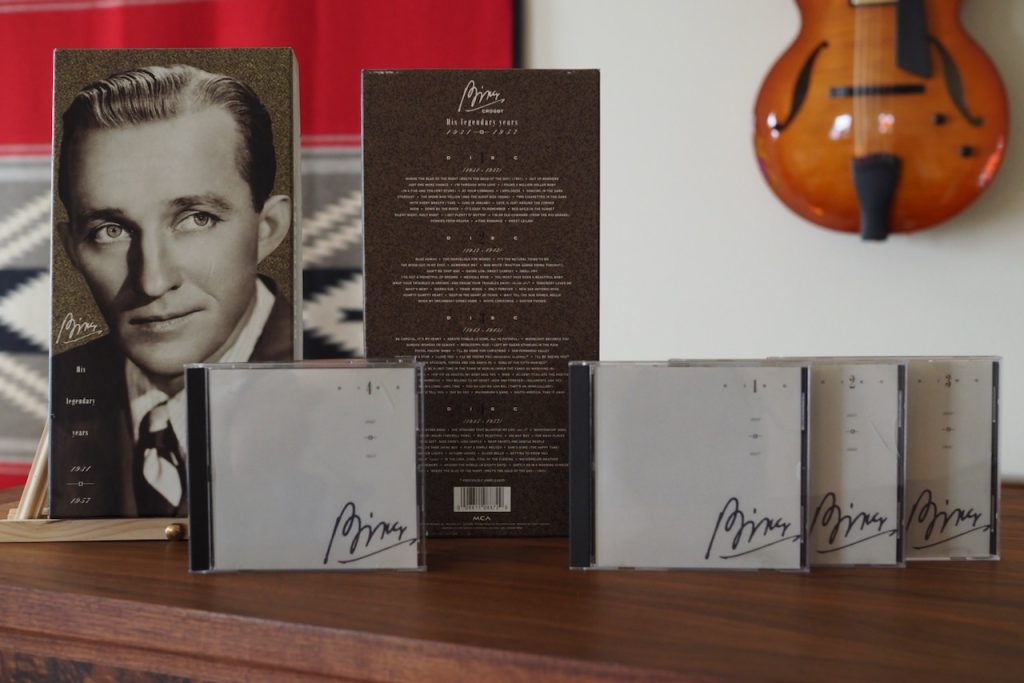
Bing, His Legendary Years, 1931 - 1957 (above) is a four CD box set of Bing Crosby recordings that spans the electric era of recording and the early monaural period of the magnetic era of recording, and are some of my all-time favorite Bing Crosby recordings.
The box set's booklet has extensive notes about Bing, his performances, and the details of all of those recordings.
"During the period of this retrospective, 1931 to 1957, recording techniques and formats changed considerably... Brunswick in 1931 and Decca between 1934 and 1946 cut directly onto wax disc masters from which metal parts and shellac pressings were made. Between late 1943 and 1949, Decca simultaneously cut most of its sessions on 16" acetate lacquer safety discs... From mid-1949 onto 30 ips open reel tape."
The electric era recordings in this box set are superbly musical through the Audio Note (UK) CD 4.1x Red Book CD player, and when the box set shifts to early monaural magnetic tape recordings on disc four, I was impressed by the fidelity of the digital transfers.
There's some real monaural magnetic era recording gems on disc four, with "Dear Hearts and Gentle People," "Play A Simple Melody," "Sam's Song (The Happy Tune)," "Gone Fishing," being a few of my favorites.
Bing does a lot of duets in this box set, and the live duet with his son Gary Crosby on "Play A Simple Melody" is a blast to listen to. You can tell Gary and Bing were having a ball singing this Irving Berlin song.
The fidelity of "Sam's Song (The Happy Tune)" is remarkable, and Gary Crosby also joins Bing on this selection for a superb performance. Gary was a remarkable talent, and hearing him sing with Bing is a real treat. With the Audio Note (UK) CD 4.1x Red Book CD player I just got lost in this beautiful recording of a remarkable live performance.
The live recording of "Gone Fishing" with Bing Crosby and Louis Armstrong is a blast to hear, and the fidelity through the Audio Note (UK) CD 4.1x Red Book CD player was an excellent example of how good early monaural magnetic era recordings could be.
The Audio Note (UK) CD 4.1x Red Book CD player made these recorded performances of Bing Crosby remarkably engaging, and I've never heard them played back in such satisfying high-fidelity. Homage.
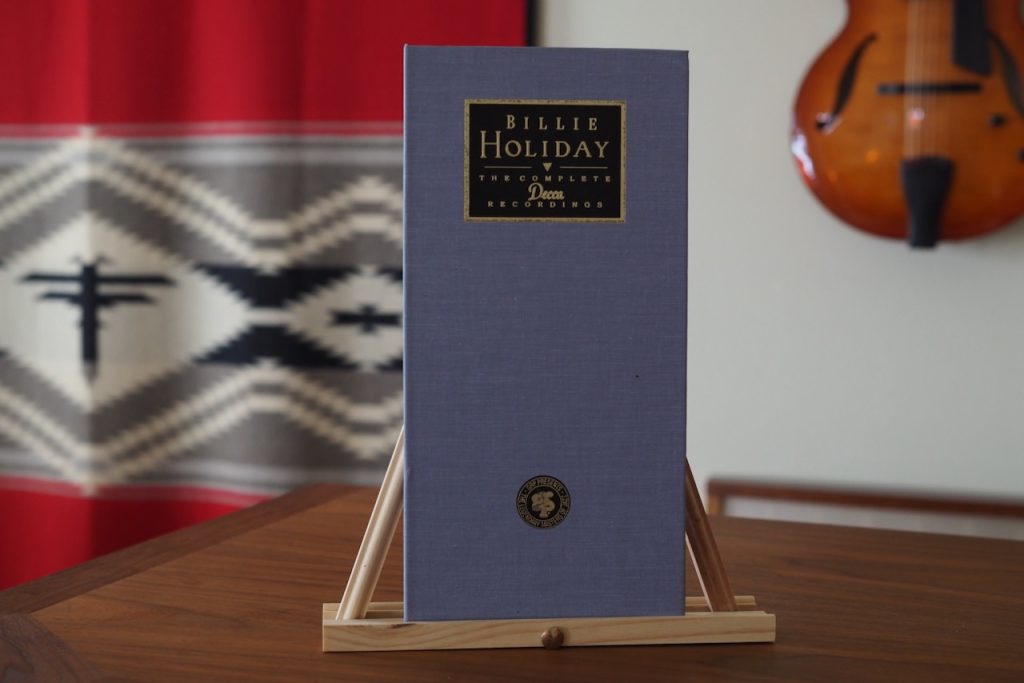
Another box set that spans the late electric recording era and the early monaural period of the magnetic era, is the excellent two disc set Billie Holiday, The Complete Decca Recordings 1944 - 1950 (GRP D217027).
The musical treasures that exist in the early part of our historic music canon never ceases to amaze me, like these recordings of the great Billie Holiday on Decca.
Billie Holiday, The Complete Decca Recordings 1944 - 1950 two disc box set also includes an excellent booklet with lots of good information about Billie's recording career, and the recordings of the two disc set.
"The sessions prior to 1949 were originally recorded on acetate discs. In 1943, Decca instituted a procedure whereby each performance was recorded not only on a 10" lateral cut acetate disc... but also on one or more 16" vertical cut 33 1/3 rpm safeties ... (which were) transferred to digital tape by Steven Lasker..."
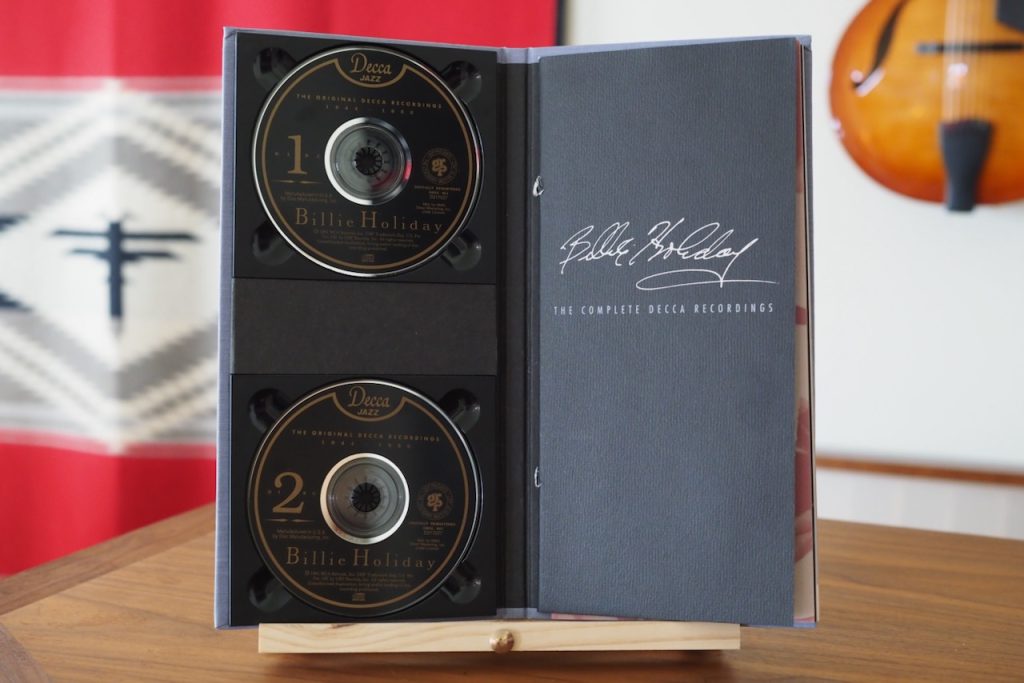
"In 1949 Decca became the first major U.S. record company to record on tape... the original 30 ips masters between August 17, 1947 and March 8, 1950. This set contains one-step transfers from these originals..."
"Crazy He Calls Me," "Please Tell Me Now," and "God Bless the Child" are examples of songs from the 30 ips masters, and the Audio Note (UK) CD 4.1x Red Book CD player really makes them a delight to listen to.
The Audio Note (UK) CD 4.1x Red Book CD player reveals excellent monaural magnetic era recording fidelity with these songs, with a vivid, dynamic, and naturally musical presentation that just allowed me to immerse myself in the music.
I was impressed with how good these early monaural magnetic era recordings sounded through the Audio Note (UK) CD 4.1x Red Book CD player, and I think listeners new to the great musical performances from the early recording eras with be surprised and pleased by the level of fidelity.
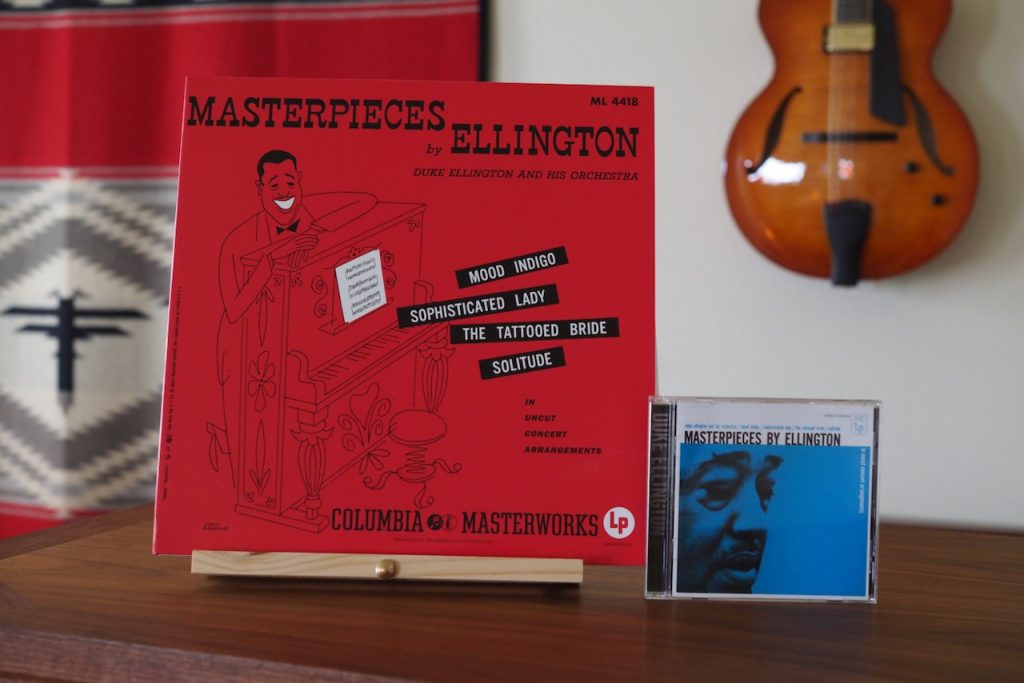
One last monaural magnetic era recording example , and another of my favorites, is the first LP album recorded on magnetic tape in 1950 by the great Duke Ellington, the superb Masterpieces By Ellington.
I first became aware of Masterworks By Ellington when I purchased the superb 45 rpm version by Chad Kassem on the Analog Productions label (HERE) that was remastered from the original analog tapes by Ryan Smith at Sterling Sound, and plated and pressed at Chad's Quality Record Pressings.
The Analog Productions reissue of Masterworks By Ellington alerted the audiophile sector that there were some superb monaural magnetic era recordings of great music in our historic music canon.
I also purchased the Masterpieces By Ellington reissue CD on the Columbia Legacy label (CK 87043) so I could hear it played by the Audio Note (UK) CD 4.1x Red Book CD player.
The Columbia Legacy Masterpieces By Ellington was produced by Michael Brooks and Michael Cuscuna, and mastered and transferred to digital with DSD technology by Mark Wilder at Sony Studios in New York City.
The reality is, there were a lot of great musical performances recorded in the early eras of the recording arts, like the ones I've been highlighting in this article, and many others, but fewer listeners are aware of them than say, Masterpieces By Ellington, for example, which was popularized by Analogue Production's Chad Kassem (thank you, Chad!).
In the case of Masterpieces By Ellington, once again, the Audio Note (UK) CD 4.1x Red Book CD player turned those early monaural magnetic era recordings into masterpieces of listening pleasure. I know, bad pun, but still true!
The Audio Note (UK) CD 4.1x Red Book CD player allowed the sense of vividness, dynamics, and the emotional intensity of those recorded musical performances to come through in impressive fashion, and I marveled at how good the recordings were during the monaural period of the magnetic era of recording.
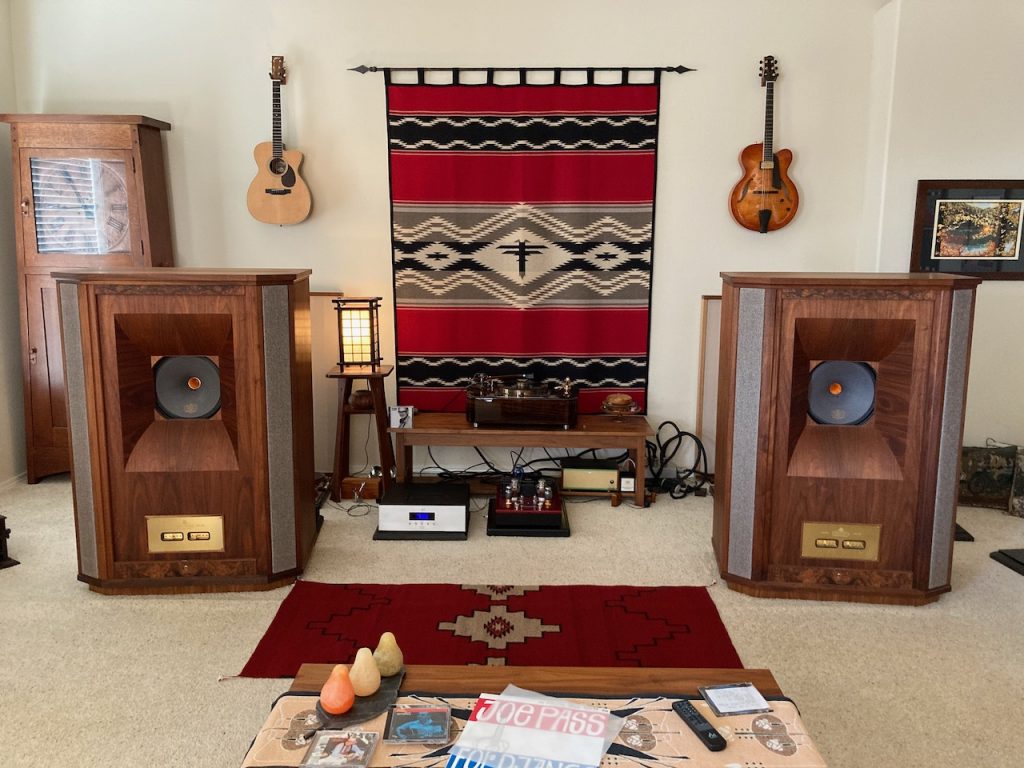
As I mentioned earlier, the first twelve years of the magnetic era of recording were monaural (1945 to 1957), but for the next twenty-seven years stereo recordings would dominate the landscape of magnetic era recording arts (1958 to 1975).
During that time 33 1/3 rpm stereo vinyl records became widely available to home listeners, who were now transitioning to listening to stereo records on a pair of loudspeakers, instead of one loudspeaker.
During the stereo period of the magnetic era of recording every part of the recording and mastering chain improved, as well as the manufacturing equipment used for making records.
The home audio equipment available to consumers also evolved to take advantage of the new stereo high-fidelity recordings.
The most well-recorded albums of the magnetic era stereo period are truly impressive to hear, and they encouraged further development of the home audio equipment available to consumers, and eventually morphed into the high-performance enthusiast audio sector we are all familiar with today.
The best stereo recordings had both impressive musicality and sound quality, and included all the stereo visuospatial aural cues that gets audiophiles excited about the 'being there' level of realism that some of the recordings are capable of.
As an example, every week my friend David and I listen to a jazz guitar album or two after we finish up with David giving me a jazz guitar lesson.
We've listened to CDs of Jim Hall, Joe Pass, Chris Flory, Paul Desmond (with Ed Bickert), and many others, and the Audio Note (UK) CD 4.1x Red Book CD player provided stunning live-like performances from those CDs.
In fact, David, normally reserved in his appraisal of hifi gear performance, commented that it was like being present for the live performances when listening to CDs through the Audio Note (UK) CD 4.1x Red Book CD player.
I'll second David's appraisal, and add to it by saying the Audio Note (UK) CD 4.1x Red Book CD player plays well-recorded magnetic era stereo CDs at such a high level of performance, that you'd likely need a turntable and cartridge combination in the $20,000 USD plus range to best its performance via vinyl playback.
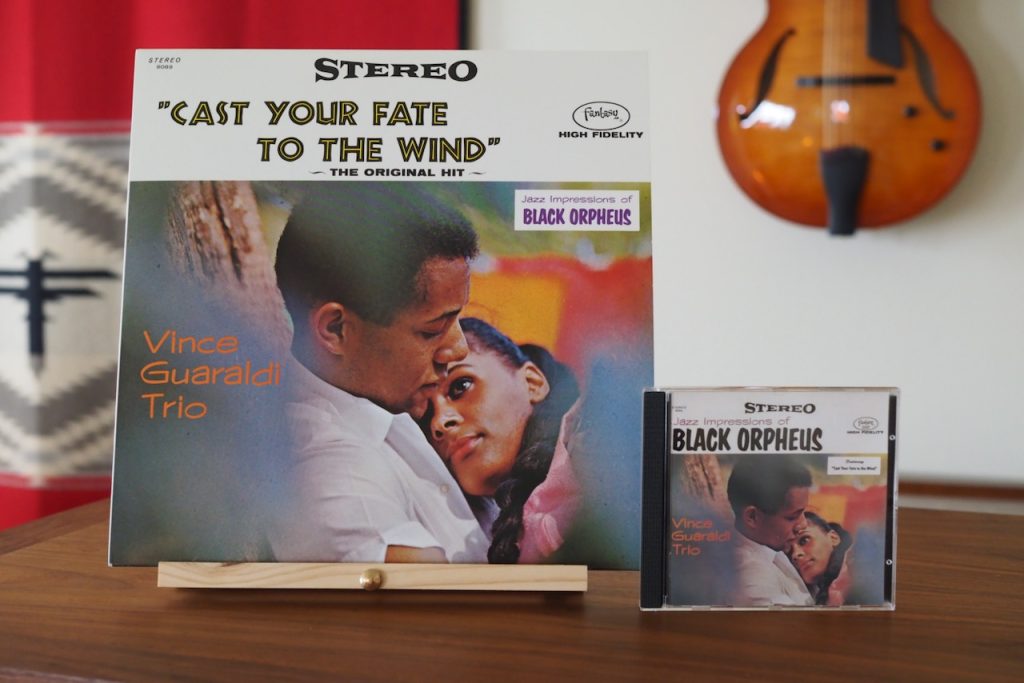
One magnetic era stereo album that is on pretty much every audiophile's list for having both great sound quality and great music is the Vince Guaraldi Trio's Jazz Impressions of Black Orpheus, which features compositions and covers of songs inspired by the 1959 film Black Orpheus.
The version of Jazz Impressions of Black Orpheus I have on CD is the DCC Compact Classics (GZS 1042) version, remastered from the original 1961 two-track tapes for CD by Steve Hoffman, which is my favorite CD version of Jazz Impressions of Black Orpheus.
Through the Audio Note (UK) CD 4.1x Red Book CD player, Jazz Impressions of Black Orpheus was truly impressive. A wide and deep soundstage, holographic imaging, and beautiful natural sounding tonality, all added to my listening enjoyment.
Whether talking about visuospatial traits, like soundstage and imaging, or musical traits like timbre, melodies, dynamics, and the like, the Audio Note (UK) CD 4.1x Red Book CD player sounded truly impressive.
More importantly, the Audio Note (UK) CD 4.1x Red Book CD player connected me to the emotional content of the music exceptionally well. The CD 4.1x transcended the digital medium to provide not only great sound quality and musicality, but also provided me with a strong emotional connection to the music.
I don't have many of the same albums on both CD and vinyl, but I happen to in the case of Jazz Impressions of Black Orpheus.
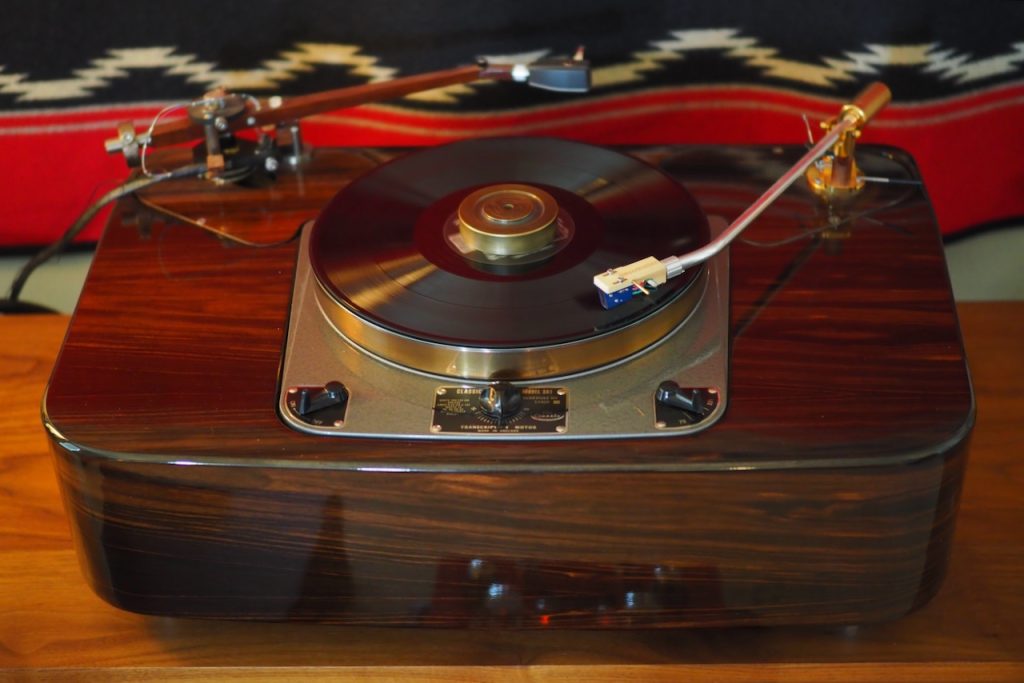
I have the two LP set of Analogue Productions 45 rpm version of Jazz Impressions of Black Orpheus, which is the best sounding LP version of it I've heard.
I thought it would be fun to compare Jazz Impressions of Black Orpheus on both CD and LP with the $14,331 USD Audio Note (UK) CD 4.1x Red Book CD player, and the Audio Note (UK) Io I MC phono cartridge ($5028.50 USD), AN-S4 step-up transformer ($7543), and AN-V silver interconnects ($918.50), with my custom CTC Garrard 301 turntable spinning the LPs to hear how the two sources compared.
So that's $13,490 total for the cartridge, SUT, and cable combination, and along with my CTC Garrard 301 with its oversize brass platter, brass spindle, custom Artisan Fidelity plinth, Schick tonearm etc., the total comes pretty close to the $30K mark in today's prices I suspect. That's about double the CD 4.1x's asking price of $14,331 USD.
The Audio Note (UK) Io I MC phono cartridge is the best cartridge I've ever heard in my audio system, and it is significantly better than my Ortofon SPU Classic G MkII cartridge.
On my CTC Garrard 301 turntable the Audio Note (UK) Io I MC phono cartridge is simply breathtaking on the usual high-quality recordings from the stereo period of the magnetic recording era.
What does double the price for a "Level Three / Four" vinyl source get you in comparison to the the Level Three Audio Note (UK) CD 4.1x Red Book CD player?
Well, you might not be shocked that the Audio Note (UK) analog front end performed at an overall higher level than the Audio Note (UK) CD 4.1x Red Book CD player in terms of presence, tonal refinement, resolution, transparency, dynamics, imaging, and bass extension, for example, but you might be surprised to know how close the CD 4.1x CD player came to the Audio Note (UK) analog front end's level of performance in terms of overall sound quality, and particularly the listening satisfaction I experienced.
First of all, the overall voicing of the Audio Note (UK) analog front end and the Audio Note (UK) CD 4.1x Red Book CD player are quite similar, and the CD 4.1x sounds very 'analog' in its presentation of the music.
I think that if I had you here for blindfolded listening session, and I played selections with both the Audio Note (UK) analog and digital source components, you might be hard pressed to tell me which source was analog, and which was digital.
The Audio Note (UK) CD 4.1x Red Book CD player made a pretty impressive statement for itself in comparison to the heady combination of the Audio Note (UK) Io I MC phono cartridge, AN-S4 step-up transformer, and AN-V silver interconnects when playing these high-quality versions of Jazz Impressions of Black Orpheus on CD and vinyl.
There was a noticeable performance improvement with my premium 45 rpm vinyl and the Audio Note (UK) analog source components, compared to my premium CD played by the Audio Note (UK) CD 4.1x Red Book CD player, but that difference was not as dramatic in magnitude as you might expect.
I didn't have time to do the additional comparison, but I'm not so sure if my Ortofon SPU Classic G MkII cartridge and SUT combination could even match the performance I'm hearing from the Audio Note (UK) CD 4.1x Red Book CD player. The CD 4.1x is just that good.
Which source am I listening to, analog or digital?
Analog still had an advantage in terms of sound quality, but I found both the analog and digital Audio Note (UK) sources to provide similar levels of listening satisfaction, which I thought was rather remarkable.
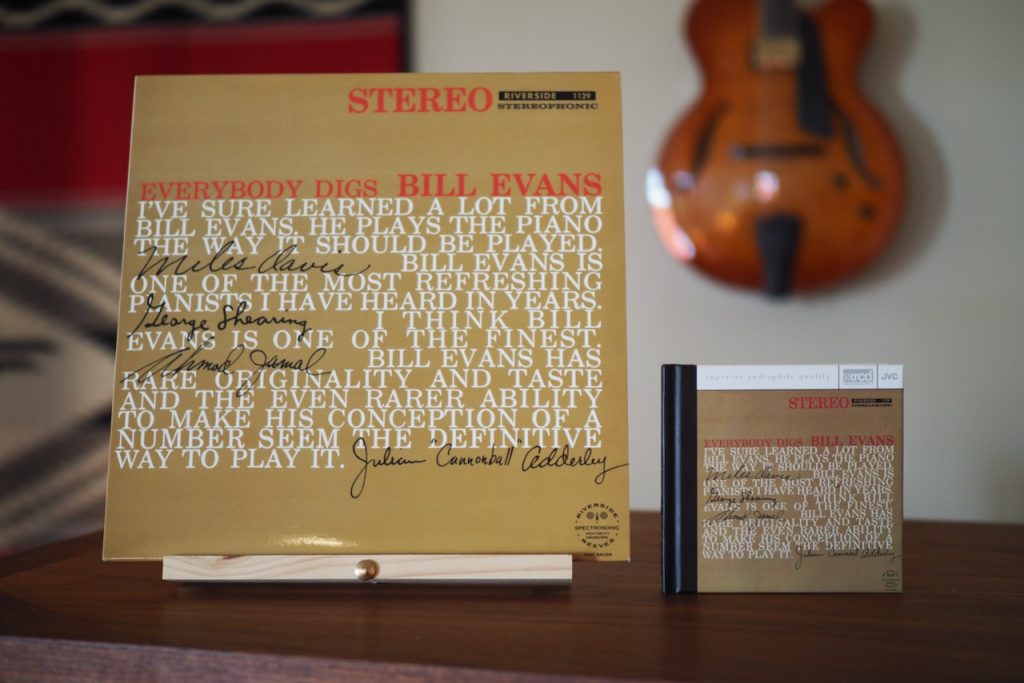
Another magnetic era stereo album that is on pretty much every audiophile's list is the Bill Evans Trio's Everybody Digs Bill Evans album.
I happen to have Everybody Digs Bill Evans on a premium JVC XRCD CD (JVCXR-0020-2), as well as part of an Analogue Productions Bill Evans - Riverside Recordings 45 rpm vinyl box set (HERE).
On magnetic era stereo recordings like Everybody Digs Bill Evans, the Audio Note (UK) CD 4.1x CD player was truly exceptional at presenting all those non-musical stereo visuospatial cues enjoyed by audiophiles.
The Audio Note (UK) CD 4.1x CD player's imaging and soundstage excellence were clearly evident on "Minority," with holographic-like images layered upon a wide and deep soundstage. Images on the soundstage each had their own SET-like 'lit from within' sense of reverberant acoustic around them, all nested within the larger sense of acoustic 'space' in the recording, which resulted in a truly impressive aural holographic 'spooky' presence of the musicians in my listening room.
Transparency and resolution of the Audio Note (UK) CD 4.1x CD player were also first rate. The CD 4.1x provided a very clear window into the timbral nuances of the instruments being played on "Night and Day," and revealed the beautiful harmonic decay of the piano notes on "Young and Foolish." I also thought it was notable as to how clearly the CD 4.1x articulated the notes in the bass solo on "Young and Foolish."
I have been listening to a lot of of magnetic era stereo jazz recordings with the Audio Note (UK) CD 4.1x CD player since it arrived here for review, and I am always blown away at how good the CD 4.1x is at capturing all the visuospatial cues present in stereo recordings.
If you are coming from a turntable and vinyl background, you won't be disappointed with the CD 4.1x's stereo visuospatial performance. For those who really enjoy the visuospatial performance aspects of stereophonic recordings, you are in for a treat with the Audio Note (UK) CD 4.1x CD player, as it is remarkably good portraying those recording traits.
However, what really has impressed me about the Audio Note (UK) CD 4.1x CD player's performance has been its high level of musicality. The CD 4.1x has been able to take any well recorded magnetic era stereophonic recordings and play the music with a very live-like sense of timbre, tone color, melody, harmony, rhythm, tempo, and dynamics.
Particularly impressive was the Audio Note (UK) CD 4.1x CD player's ability to portray the dynamic gradations of music from soft to loud, which I believe is what Audio Note (UK)'s Darko Greguras was referring to when he mentioned "dynamic transfer."
Subtle dynamic variations are what make melody lines come alive in jazz. Moderate variations in dynamics are what puts the 'beat' in the Beatles. Large dynamic hits in music are what makes you jump in your listening seat.
Whether soft, moderate, or loud, dynamics add a lot of artistic and emotive content to music, and when an audio component is really good at presenting the full range of dynamics in music—like the Audio Note (UK) CD 4.1x CD player is—it makes the music much more emotionally compelling to listen to.
Switching over to the Analogue Productions Everybody Digs Bill Evans 45 rpm vinyl and Audio Note (UK) Io I MC phono cartridge, AN-S4 step-up transformer, and AN-V silver interconnects analog source combination, revealed that the JVC XRCD CD (JVCXR-0020-2) of Everybody Digs Bill Evans wasn't very close to the Analogue Productions 45 rpm vinyl's tonal balance or overall musicality.
The vinyl had a warmer, more natural, more full-bodied, and more nuanced and articulate presentation of the music. The CD sounded leaner throughout the audio spectrum, with less fine detail, and shorter harmonic decay of the musical notes in evidence. The CD sounded less tonally natural compared to the vinyl, and wasn't as musically engaging overall.
The Audio Note (UK) CD 4.1x CD player revealed the Everybody Digs Bill Evans JVC XRCD CD wasn't at quite the same level of performance as the Steve Hoffman mastered Jazz Impressions of Black Orpheus on DCC Compact Classics (GZS 1042), which sounded much closer to the 45 rpm vinyl version tonally, which the JVC version didn't.
While I enjoyed the warmer and more natural balance of the vinyl versus the CD of Everybody Digs Bill Evans, the Audio Note (UK) CD 4.1x CD player was still very impressive in its own right in the way it played the music off the CD.
Overall, on the best vinyl, the Audio Note (UK) Io I MC phono cartridge, AN-S4 step-up transformer, and AN-V silver interconnects have a performance advantage over the Audio Note (UK) CD 4.1x CD player, but the real take-home message here is that the Audio Note (UK) CD 4.1x CD player comes much closer to the vinyl listening experience than you might think a CD player could.
If you are trying to squeeze every last drop of performance out of the best magnetic era stereo recordings, vinyl is the top performer between the two formats.
Not by as much as I had thought though. I suspect if I did some blindfolded A-B CD to vinyl listening comparisons, most listeners might have to listen closely multiple times before deciding on which one was the CD and which one was the vinyl record.
That's just how good the Audio Note (UK) CD 4.1x CD player is, and as a considerable important bonus, the CD 4.1x sounds bloody good on everything, from the earliest acoustic, electric, and monaural magnetic era recordings, to the best of magnetic era stereo recordings.
The Audio Note (UK) CD 4.1x CD player is a musical gem, and is capable of doing something no single turntable and cartridge combination is capable of, which is being able to play recordings from the acoustic, electric, and magnetic eras of recording as a single source component, and all in high-fidelity.
Ideally, a listener would have an Audio Note (UK) CD 4.1x CD player to play the great musical performances across the breadth of our historic music canon from all the eras of the recording arts, and a fine analog front end like the Audio Note (UK) Io I MC phono cartridge, AN-S4 step-up transformer, and AN-V silver interconnects combination for getting the most out of the best recordings from the stereo period of the magnetic era.
However, if I could only choose one between those two sources, with my broad ranging interests in music across the four eras of the recording arts, I think I'd go for the Audio Note (UK) CD 4.1x CD player, as it opens up the greatest amount of music to listen to from our historic recorded music canon.
That would be a tough choice though, as I sure would miss hearing the best vinyl through the Audio Note (UK) Io I MC phono cartridge, AN-S4 step-up transformer, and AN-V silver interconnects combination.
Even on the very best of magnetic era stereo recordings that we audiophiles cherish, the Audio Note (UK) CD 4.1x CD player is not that far behind the vinyl listening experience at its best, and I believe most dedicated vinyl aficionados would be truly impressed with the CD 4.1x's very analog-like performance.
Certainly consider me to be very impressed with the performance of the Audio Note (UK) CD 4.1x CD player.
I'd say the Audio Note (UK) CD 4.1x CD player performs at an equivalent to higher level than most turntables in $20,000 USD range I've heard, and comes closer than you might imagine to the performance of some of the better analog sources out there, like that of the Audio Note (UK) Io I MC phono cartridge, AN-S4 step-up transformer, and AN-V silver interconnects combination I've been listening to on my CTC Garrard 301 turntable.
The Audio Note (UK) CD 4.1x CD player really does it all. Its very revealing of the 'authenticity' of the source material for recordings from any era, yet plays them all back with exceptionally engaging musicality, while providing superb emotional engagement at the same time.
The Audio Note (UK) CD 4.1x CD player also does all of the audiophile stereo visuospatial elements like imaging, soundstage, etc., extremely well, which can be entertaining for magnetic era stereo recordings.
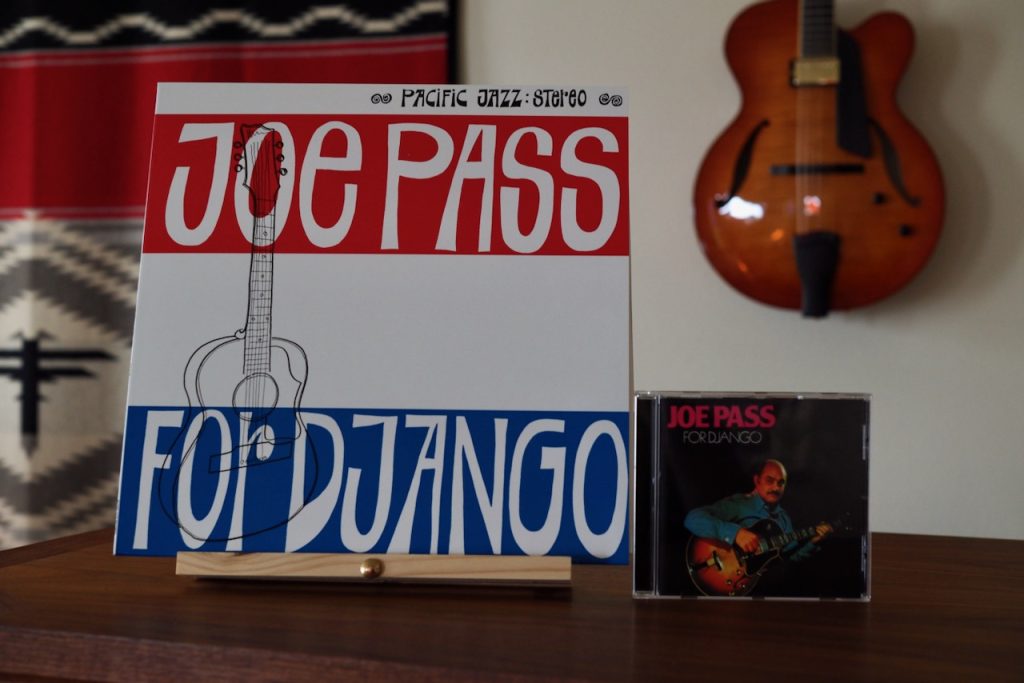
Here's one final comparison of the Audio Note (UK) CD 4.1x CD player to the Audio Note (UK) Io I MC phono cartridge, AN-S4 step-up transformer, and AN-V silver interconnects combination for you, featuring the remarkable jazz guitar playing of Joe Pass at the peak of his creative power in the 1960s.
One of my favorite Joe Pass albums during this period is For Django, an album that is legendary among jazz guitarists.
For Django was recorded at Pacific Jazz Studios, and released by Pacific Jazz Records in 1964.
The LP version I have of For Django is from the superb Tone Poet series of reissues from Blue Note (HERE), supervised by Joe Harley, and with the remastering for LP done by Kevin Gray of Coherent Audio.
The CD version I have is from Beat Goes On Records in the UK, and there is no indication in the liner notes of how the transfer to digital was done.
The back cover album notes of the LP were written by the influential radio personality Mort Fega, who you can read a nice remembrance of written by Rock and Roll Hall of Fame inductee, Donald Fagen (Steely Dan), in Jazz Times HERE.
Mort said this about For Django on the LP's back cover, "This is the kind of album that demands repeated listening, which, from my point of view, is the only kind of album worth owning. I hunger for those "scary" albums that make you stop in the middle of a track and move the arm of your turntable back to hear again what you just heard and didn't believe. Regrettably, we are not getting enough of this kind of recording in today's market."
Joe Pass (guitar), John Pisano (guitar), Jim Hughart (bass), and Colin Bailey's playing were absolutely remarkable on this album. Because those recordings were made during the peak of performance for magnetic era stereo recordings, this album not only is remarkable as music, but all of those stereo visuospatial cues that are present add a little extra pizzazz to listening sessions as well, making me feel like I've been transported back to the recording session in 1964.
I'll tell you what, a turntable playing vinyl records, direct-heated single-ended-triode amplification, and horn loudspeakers aren't the only way to listen to and enjoy music, but they sure can be a spectacular way, and the combination of the Audio Note (UK) Io I MC phono cartridge, AN-S4 step-up transformer, and AN-V silver interconnects, brought the great musical performances on For Django to breathtaking life on the superb Blue Note Tone Poet LP reissue of For Django.
The natural tonality, depth, harmonic and dynamic sophistication, imaging, sense of ambience, and emotional impact of the Blue Note Tone Poet LP reissue of For Django, represents vinyl at its considerable best, and I was pretty much in awe of what I was hearing.
While the Audio Note (UK) CD 4.1x CD player let me know that the Beat Goes On Records digital transfer for the For Django CD (BGOCD430) isn't at quite the same exalted level as the Blue Note Tone Poet LP reissue of For Django, the CD 4.1x was still able to turn that CD into a truly enjoyable—even remarkable—listening experience for me.
Joe's tone on For Django is what I think of as the ultimate jazz guitar tone, and the Audio Note (UK) CD 4.1x CD player presented Joe's tone in beautiful analog-like fashion from the Beat Goes On Records version of For Django on CD (BGOCD430).
I love what the Audio Note (UK) CD 4.1x Red Book CD player does for the magnetic era stereo recordings of Joe Pass that I have on CD, bringing them to life in such realistic fashion. It makes me feel like I was in the studio with one of the greatest jazz guitarists of all time, during what was perhaps the most creative period of his prolific album output, back when giants still walked the Earth.
The overall voicing of the Audio Note (UK) CD 4.1x CD player is very analogue-like, and its musicality and sound quality I found to be truly sublime, with an overall voicing that is not unlike what I'm hearing from the combination of the Audio Note (UK) Io I MC phono cartridge, AN-S4 SUT, and AN-V silver interconnects when playing vinyl.
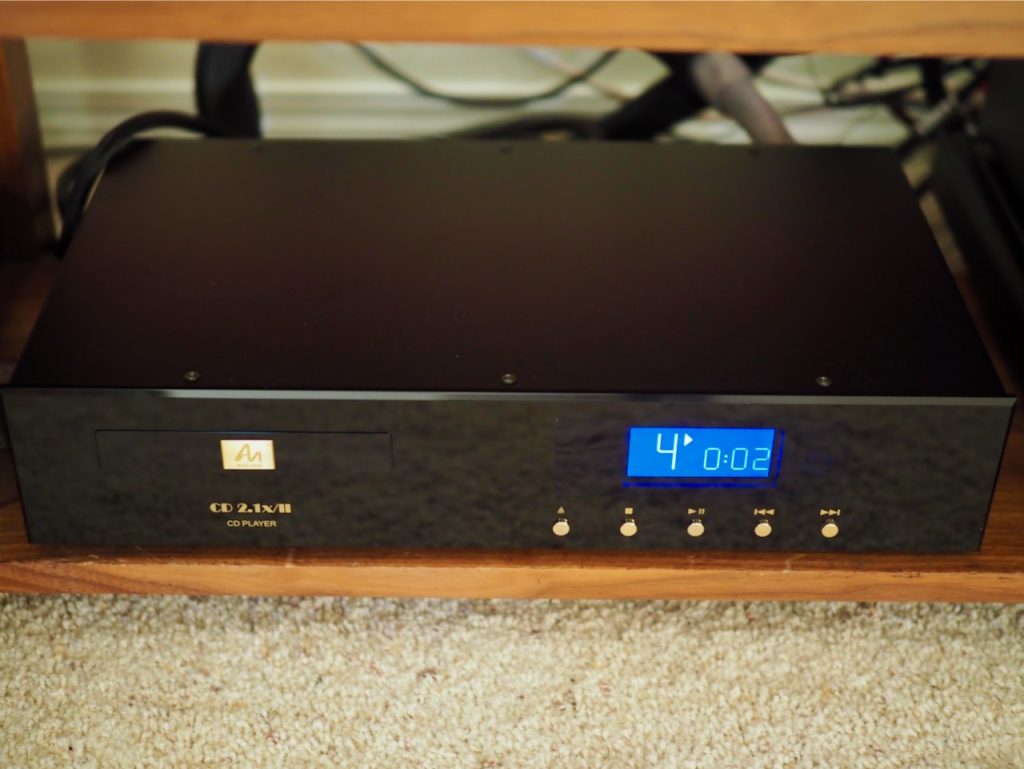
Yes, the $14,331 USD Level Three Audio Note (UK) CD 4.1x CD player is really, really good, but how does its performance compare to the $5657 USD Level One Audio Note (UK) CD 2.1x/II CD player that I was so enamored with in Issue 112 (above)?
Or more succinctly, what's the difference in performance between a Level One and Level Three Audio Note (UK) Red Book CD player?
I've been listening to a multitude of CDs on both the Audio Note (UK) CD 2.1x/II CD player and the Audio Note (UK) CD 4.1x CD player since their arrival for review.
To get a handle on the differences between their Level One and Level Three performance, when I did comparative listening sessions with the CD 4.1x and CD 2.1x/II CD players, I connected them both to AC with the same Acoustic Revive Absolute power cables, and to the Triode Lab 45 EVO SET integrated amplifier with Duelund DCA16GA interconnects, as per the photo below.
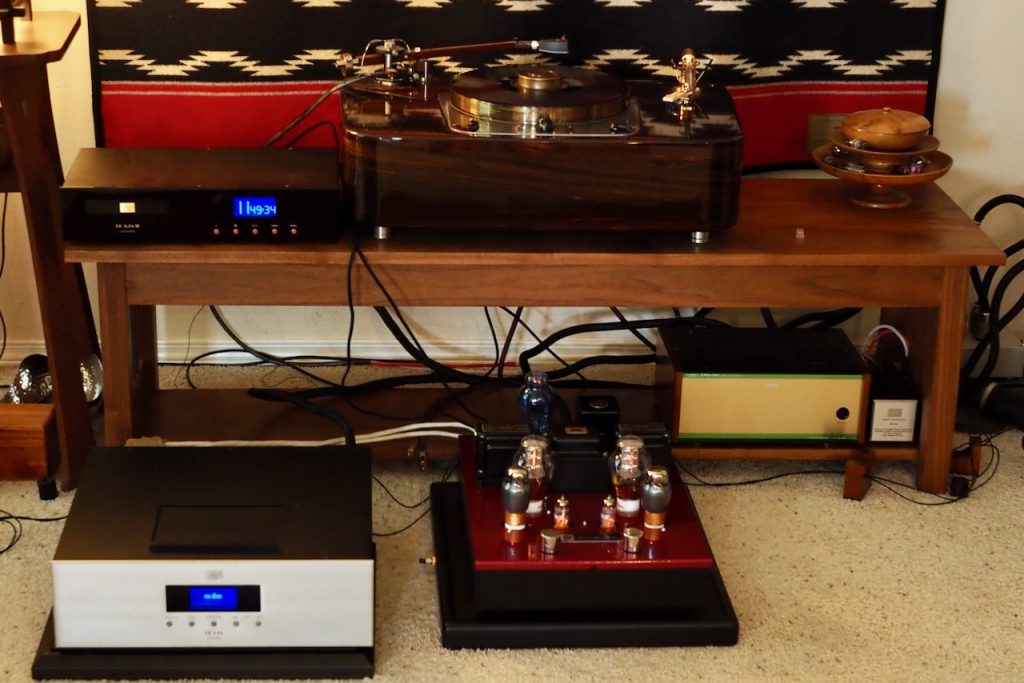
That way I could easily switch CDs back and forth between them and listen, to get a feel for the performance differences between the two CD players.
There were a number of performance trends that I observed, with the first one being that the Audio Note (UK) CD 4.1x Red Book CD player, even though it was more resolving and transparent, was better able to make lower fidelity recordings more enjoyable to listen to than the Audio Note (UK) CD 2.1x/II CD player.
For example, on the Everybody Digs Bill Evans JVC XRCD CD, the Level Three Audio Note (UK) CD 4.1x CD player provided more resolution of nuance in the cymbals intro on "Minority," and provided a more nuanced recovery of details and harmonic information overall.
The Audio Note (UK) CD 4.1x Red Book CD player was also able to take any recording and make it sound more liquid, more analog, and more tonally natural than the Audio Note (UK) CD 2.1x/II CD player was able to.
The Audio Note (UK) CD 4.1x Red Book CD player displayed finer gradations of dynamics from soft to loud, than the Audio Note (UK) CD 2.1x/II CD player.
On dynamic peaks in the music, the CD 4.1x navigated the big dynamic swings on Everybody Digs Bill Evans with ease, while the CD 2.1x/II sounded somewhat strained on the big dynamic swings in comparison.
I thought the timbre and overtones of Bill Evans' piano, Sam Jones' bass, and Philly Joe Jones' drums on Everybody Digs Bill Evans sounded more naturally live-like through the Audio Note (UK) CD 4.1x Red Book CD player.
With recordings from stereo period of the magnetic era of recording, with the Audio Note (UK) CD 4.1x Red Book CD player there was more of a vivid presence of the three-dimensional aural images arrayed across, and into the depth, of the soundstage. There was also more of a sense of the acoustic space around the images, to yield more of a live-like 'you are there' sense of the musical performance.
The differences between the Audio Note (UK) CD 2.1x/II Red Book CD player and the Audio Note (UK) CD 4.1x Red Book CD player are substantial, and you definitely get what you pay for when going from Level One to Level Three in the Audio Note (UK) CD player product line.
The Audio Note (UK) CD 4.1x Red Book CD player quite obviously has a much higher level of build than the Audio Note (UK) CD 2.1x/II Red Book CD player, evident in the CD 4.1x's more ambitious chassis, the higher-quality and higher-performance parts used, like the CD Pro 2 transport, the AD1865 DAC, the ECC88 vacuum tube output section, the transformers, the multiple power supplies, and the Audio Note (UK) capacitors, resistors, and other components used in its Tonmeister voicing strategy.
All of the more ambitious build qualities of the Audio Note (UK) CD 4.1x Red Book CD player add up to provide improved performance in terms of overall musicality and sound quality Audio Note (UK) CD 2.1x/II Red Book CD player.
All of those performance elements that make up musicality, like timbral realism, resolution of tone color, melody, harmony, rhythm, tempo, and the ability to play naturally at live-like volume levels, are at a higher level of performance with the Audio Note (UK) CD 4.1x Red Book CD player.
The same can be said for the visuospatial aural elements of transparency, resolution, soundstage, the acoustic sense of space in recordings, and imaging, which are all at a higher level of performance with the Audio Note (UK) CD 4.1x Red Book CD player.
When adding the advanced performance in terms musicality and visuospatial together, the Audio Note (UK) CD 4.1x Red Book CD player's enhanced performance allows it to deliver the full emotional content of recordings more convincingly, and have more a more refined, nuanced, and sophisticated presentation, with more natural sounding analog-like tonal qualities, and a more articulate presentation of dynamics.
The Audio Note (UK) CD 4.1x Red Book CD player was also better able to preserve the 'authenticity' of the fidelity of four eras of the recording arts, while providing even more musically engaging playback of the recorded musical performances.
While the Audio Note (UK) CD 2.1x/II Red Book CD player is a superb digital source that I really love, it seems to me that the Audio Note (UK) CD 4.1x Red Book CD player thinks its a turntable playing in regards to the tonality, depth, harmonic and dynamic sophistication, imaging, sense of ambience, and the emotional impact it provides.
While the sound quality and musicality of the Audio Note (UK) CD 4.1x Red Book CD player was clearly on a higher level, it shares with the Audio Note (UK) CD 2.1x/II Red Book CD player that tremendously musical Audio Note (UK) overall voicing, that just seems to get the most music out of whatever CD I chose to play.
It's pretty clear that Audio Note (UK) knows how to make CD players that provide an enjoyable, emotionally satisfying, and naturally musical analog-like presentation that was really able to connect me with the music in a very convincing and live-like way.
I suppose if I were comparing the Level Three Audio Note (UK) CD 4.1x Red Book CD player's overall performance to a turntable and cartridge combination, I would place it at a similar level of performance to those turntables in about the $20K USD range.
For the Audio Note (UK) CD 2.1x/II Red Book CD player, I think its performance would fall more into the range of a $10K turntable and cartridge combination.
Both of these Audio Note (UK) CD players provide very satisfying levels of performance from Red Book CDs, and the deciding factor on which one to buy will likely be will be what your budget will allow.
Either way, you'll be in for a really good time listening to music on Red Book CDs on either of these Audio Note (UK) CD players.
Oh, I also wanted to mention that I've found the Audio Note (UK) CD players to 'play well with others.'
Regardless of the associated equipment I paired them with, the Audio Note (UK) CD players provided excellent performance, and I believe that you can feel confident that you'll get that same lofty level of performance I experienced in my audio systems, in whatever systems you have.
Summary and Conclusions
The Audio Note (UK) CD 4.1x Red Book CD player thinks its a high-end turntable, and plays back Red Book CDs with the same sort of natural warmth, depth, harmonic and dynamic sophistication, that one hears from ambitious top-shelf turntables playing LPs.
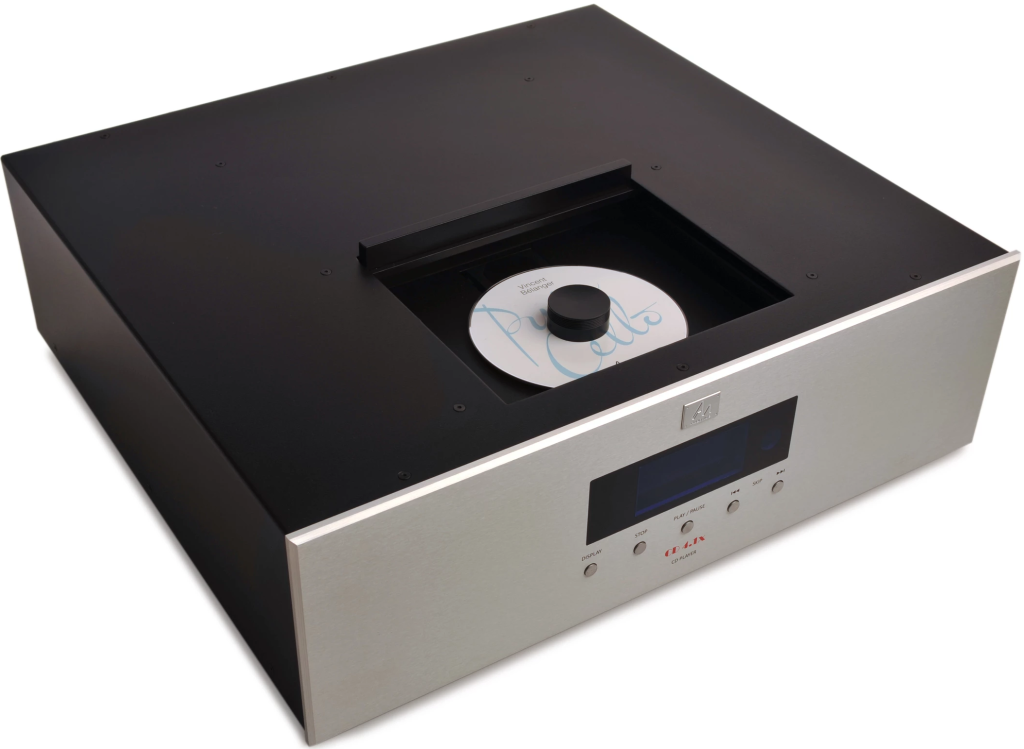
Audio Note (UK) 'Level Three' CD 4.1x Red Book CD player. Photo courtesy of Audio Note (UK).
The Audio Note (UK) CD 4.1x Red Book CD player opened up new musical vistas for me to explore, transporting me back in time, and allowing me to hear the great performances of the musical giants that walked the Earth during the acoustic, electric, and magnetic eras of the recording arts in true high-fidelity.
With the Audio Note (UK) CD 4.1x CD player I could reach out and touch flesh and blood aural images of musicians arrayed in front of me on a wide and deep soundstage, feel their tremendous emotional energy as they sang and played, and just get lost in enjoying the beauty of the music that I love listening to.
I'm truly impressed with what Peter Qvortrup and his Audio Note (UK) team have accomplished with the high-fidelity Audio Note (UK) CD 4.1x Red Book CD player.
Emphatically yes, I highly recommend the Audio Note (UK) CD 4.1x Red Book CD player to music lovers and audiophiles everywhere.
For those who want to get the most music possible out of their Red Book CD collection, and for those analog devotees who want a CD player that delivers a level of listening satisfaction that rivals the analog experience, the Audio Note (UK) CD 4.1x Red Book CD player is a compelling choice.
I would like to thank Peter Qvortrup of Audio Note (UK) for providing his Audio Note (UK) components for me to listen to and write about for you, and for sharing with me his vision for audio and music.
I would also like to thank Peter for encouraging me to explore the great musical performances documented in the monaural recordings of the acoustic, electric, and magnetic eras of the recording arts, which has dramatically enriched my listening sessions.
As always, dear readers, thanks for stopping by, and may the tone be with you!
Audio Note (UK) CD 4.1x 'Level Three' Red Book CD player (MSRP $14,331.00 USD).
Contacts for sales inquiries: Daniel Qvortrup and Peter Qvortrup




